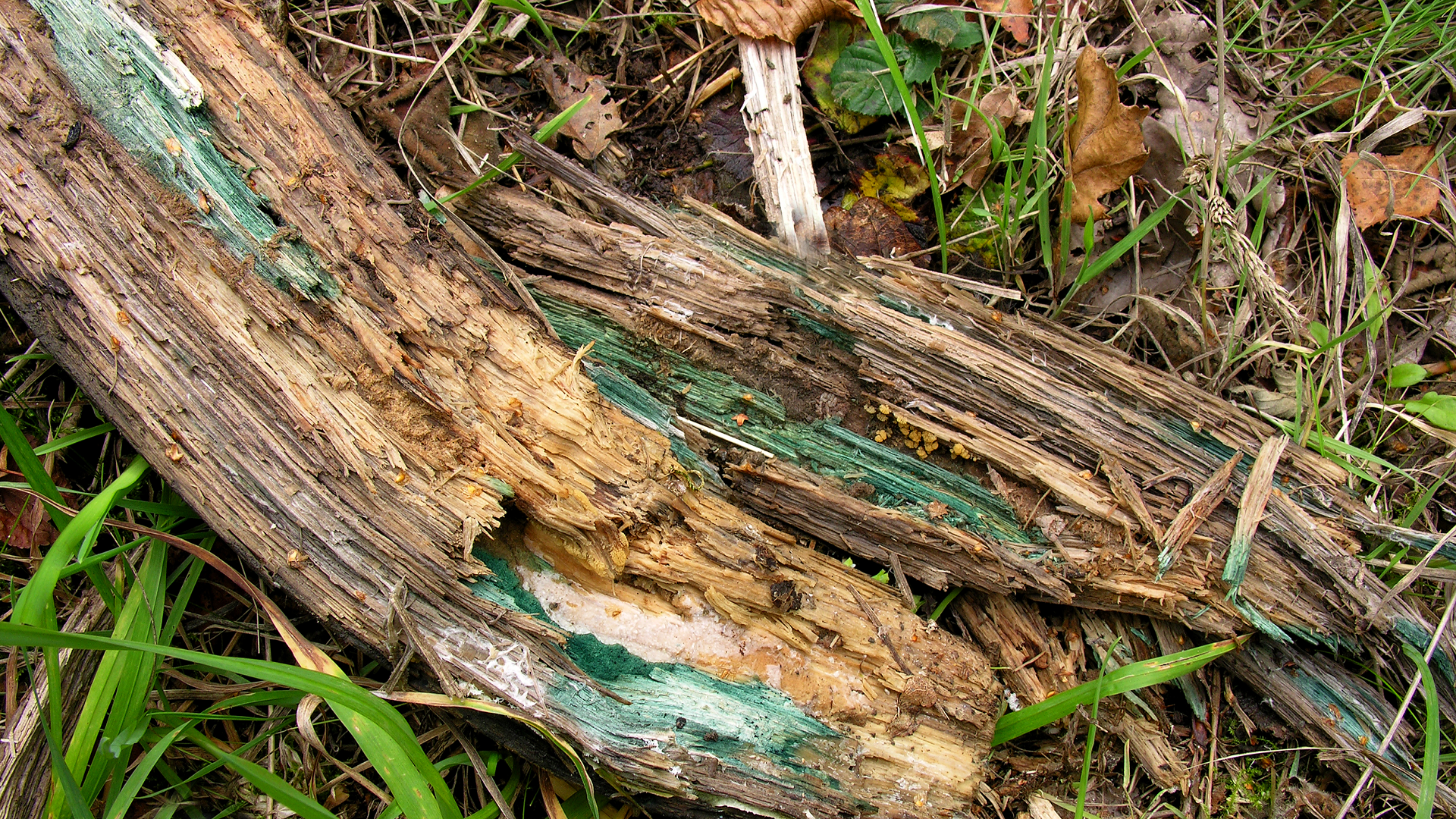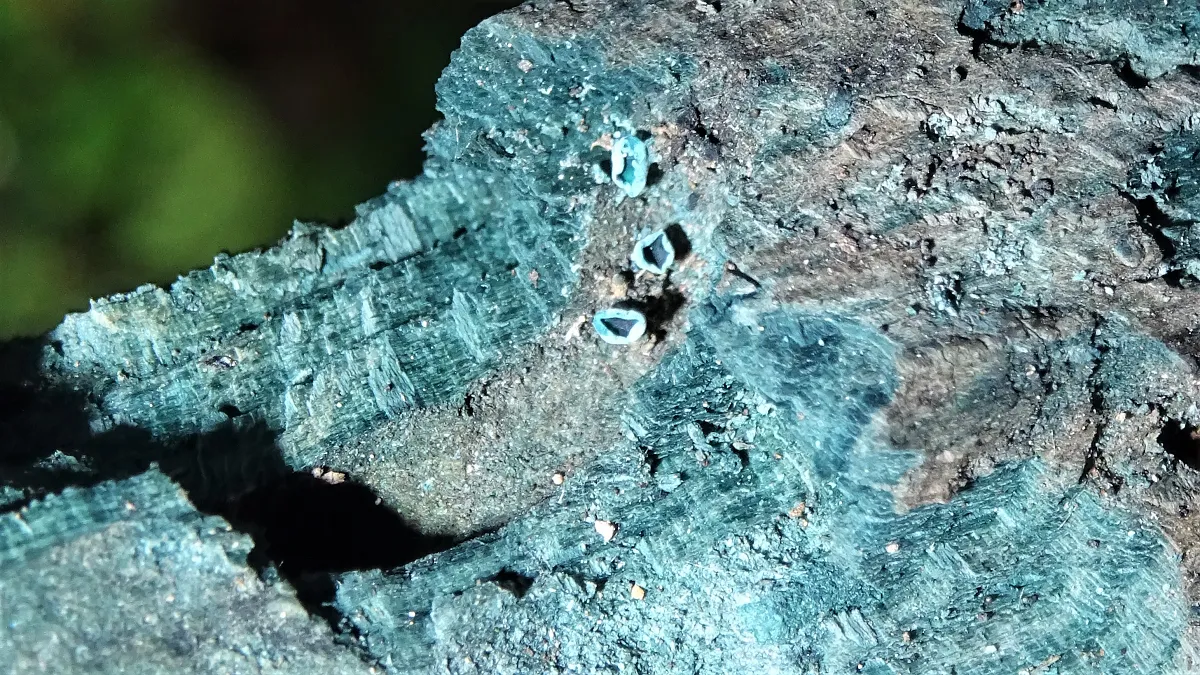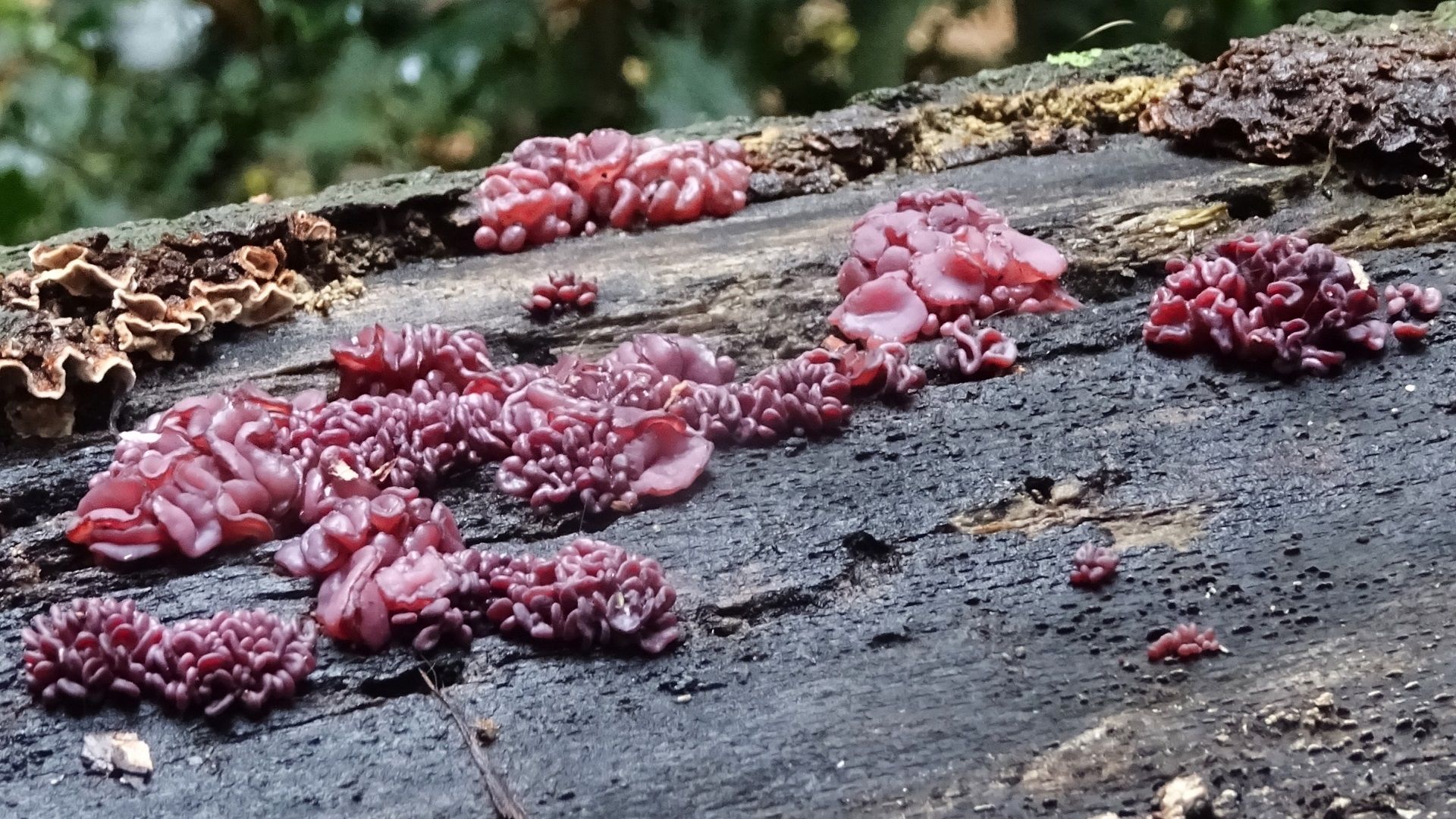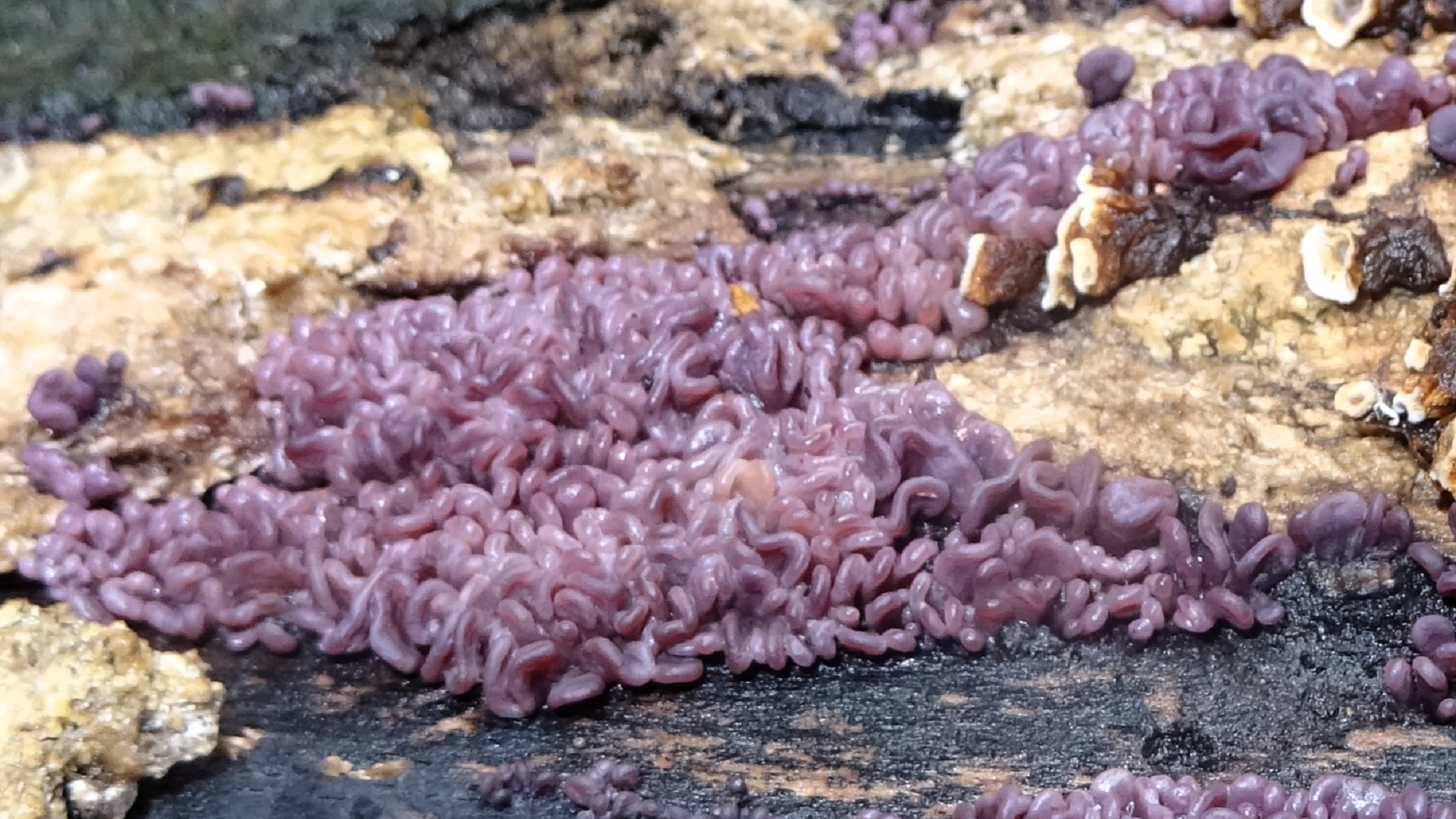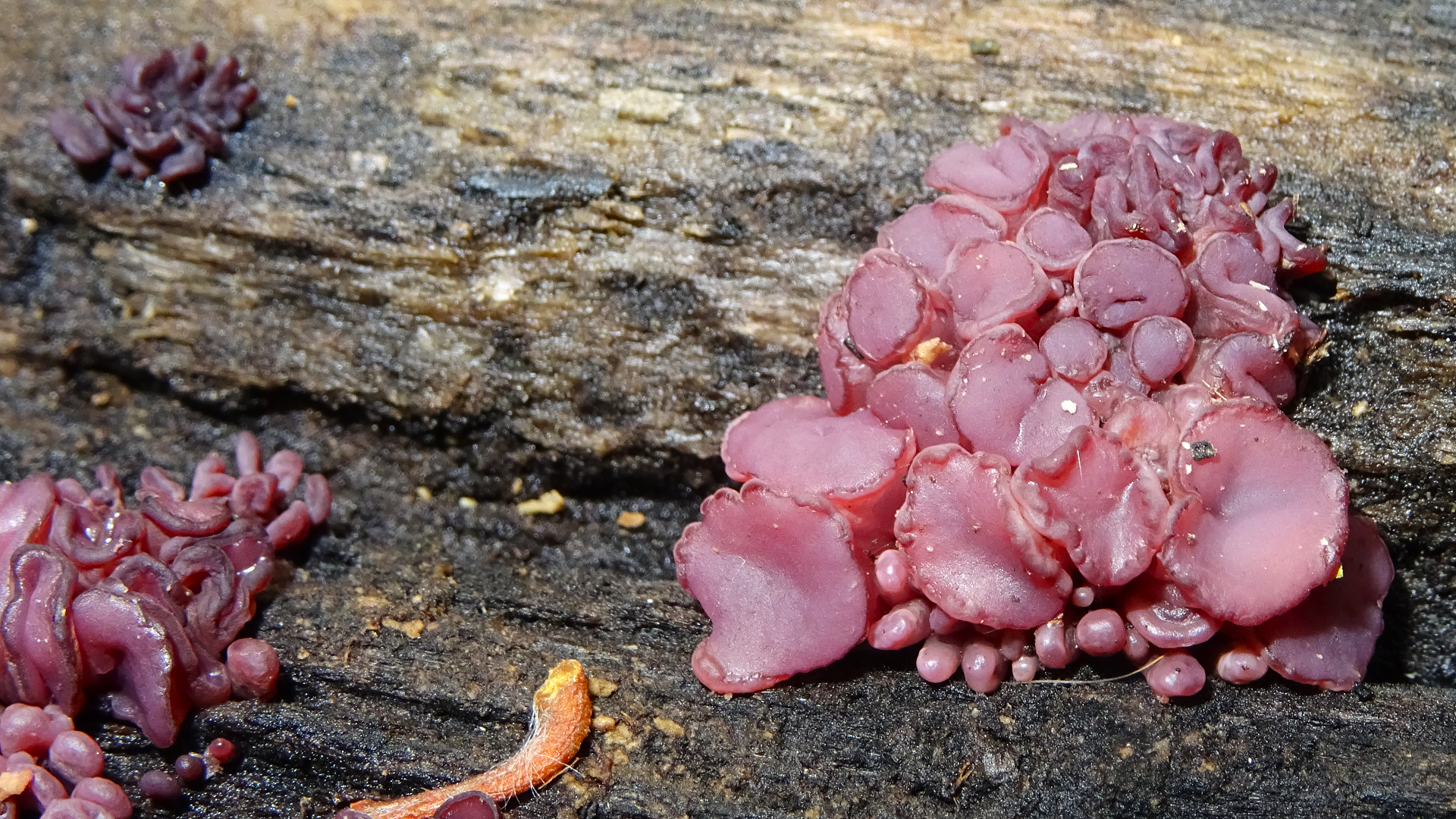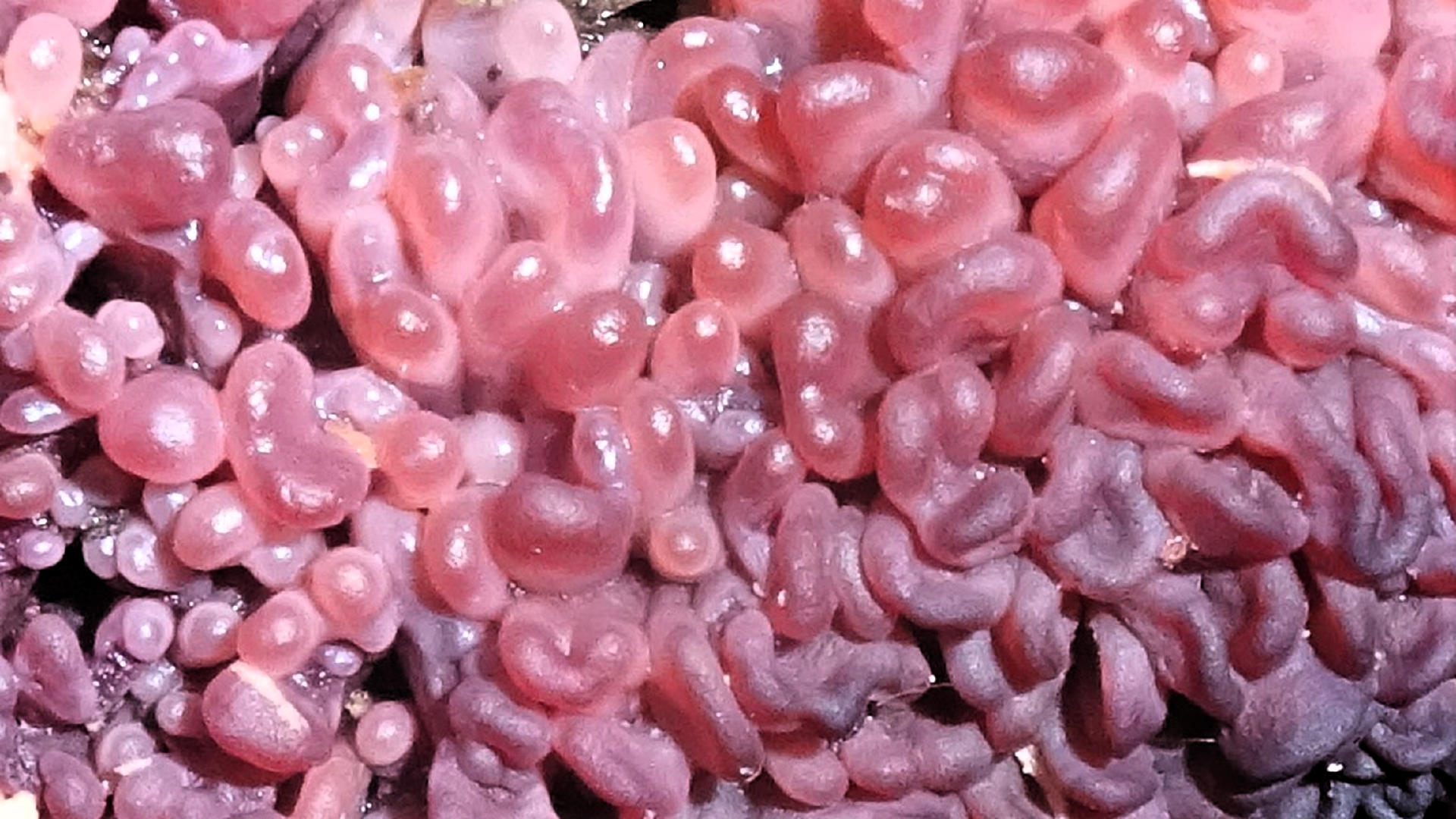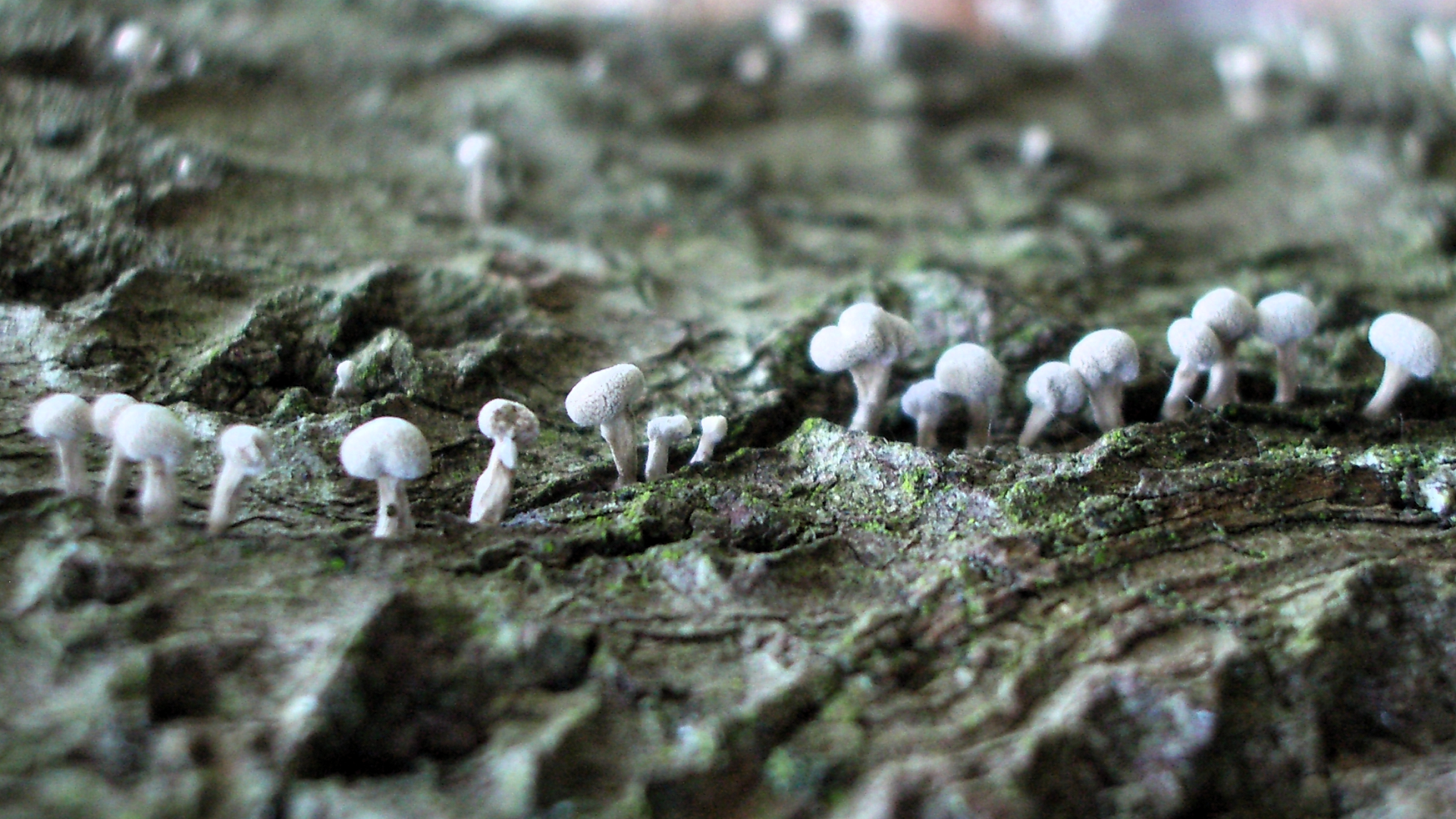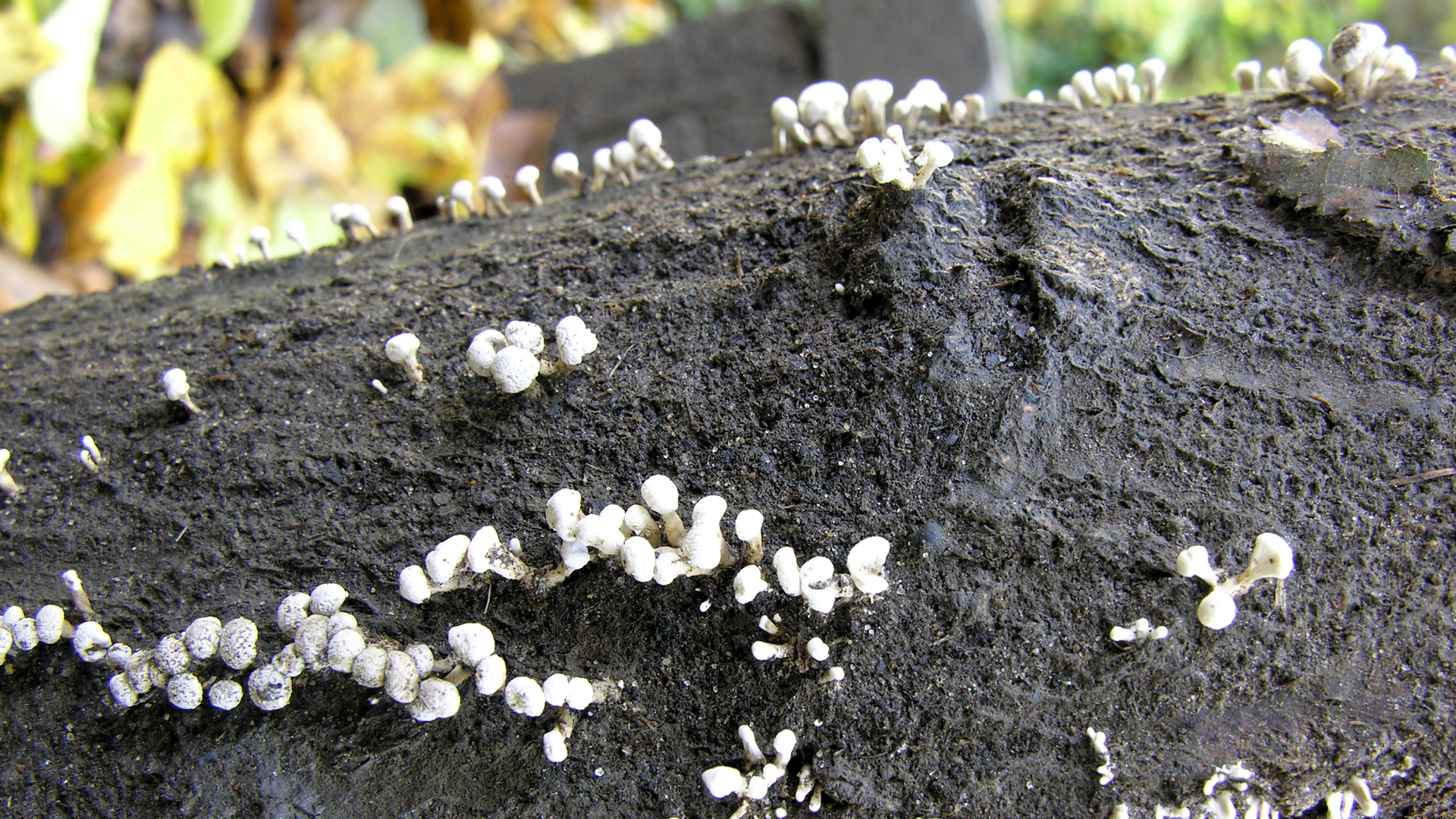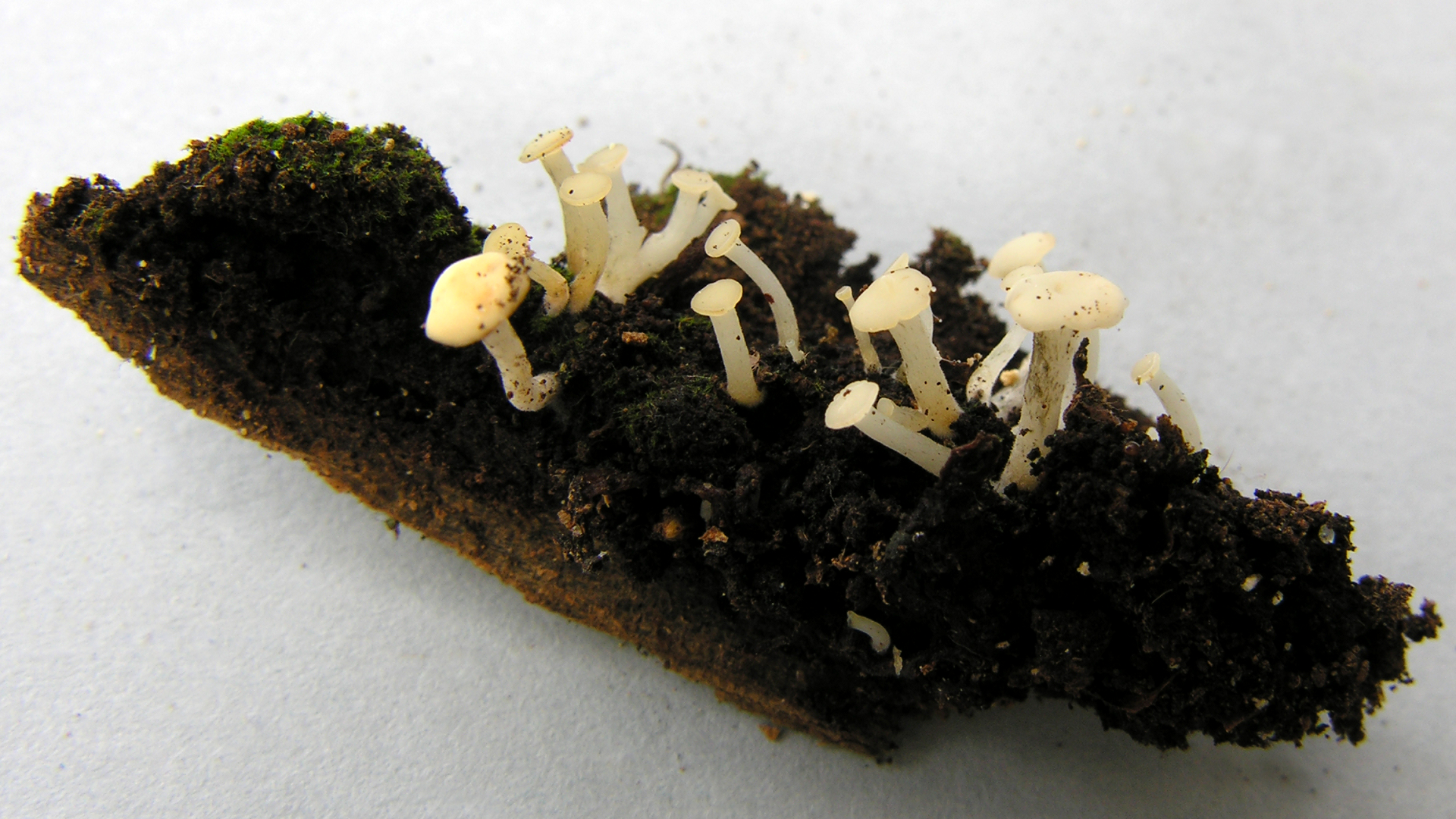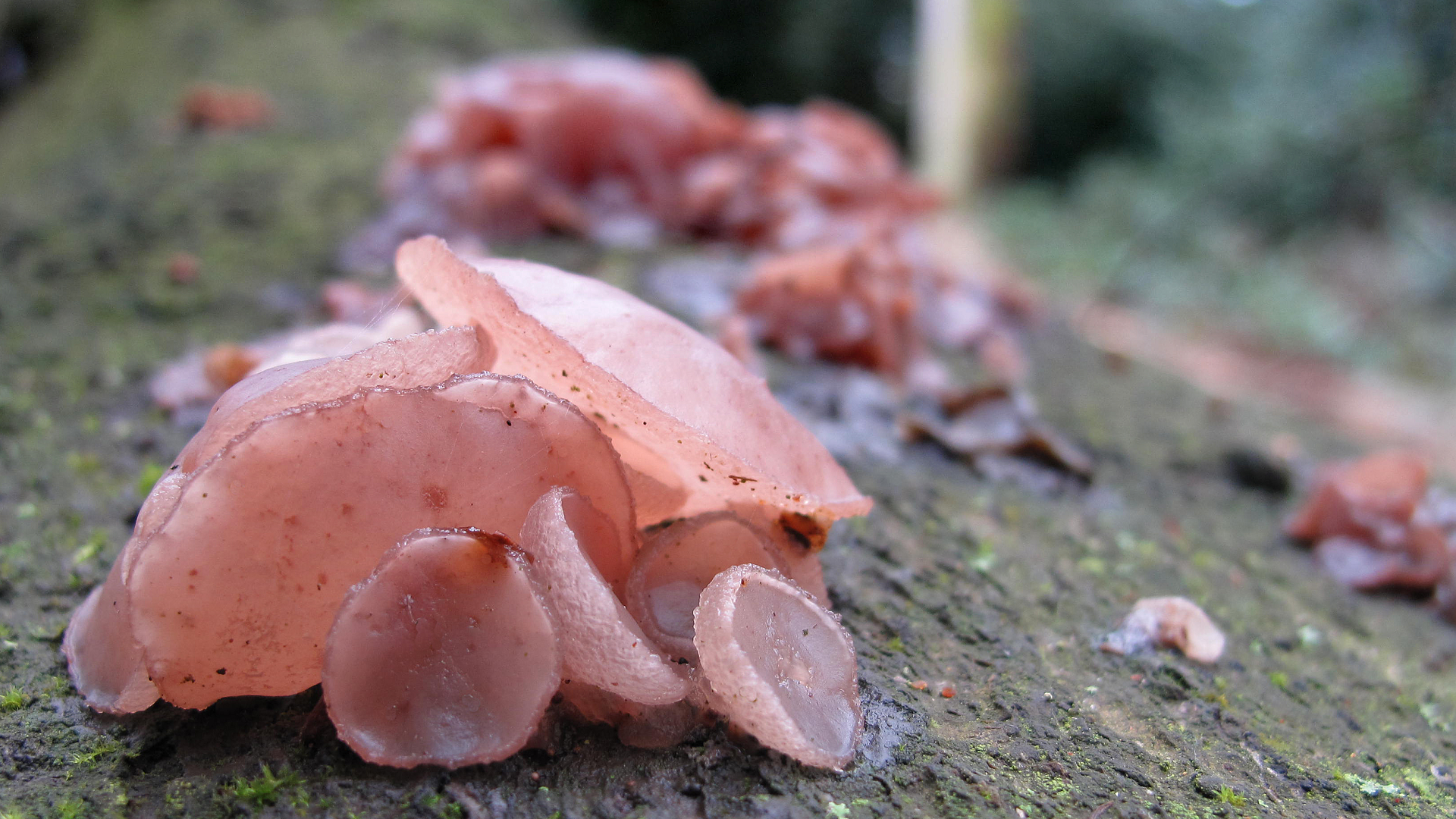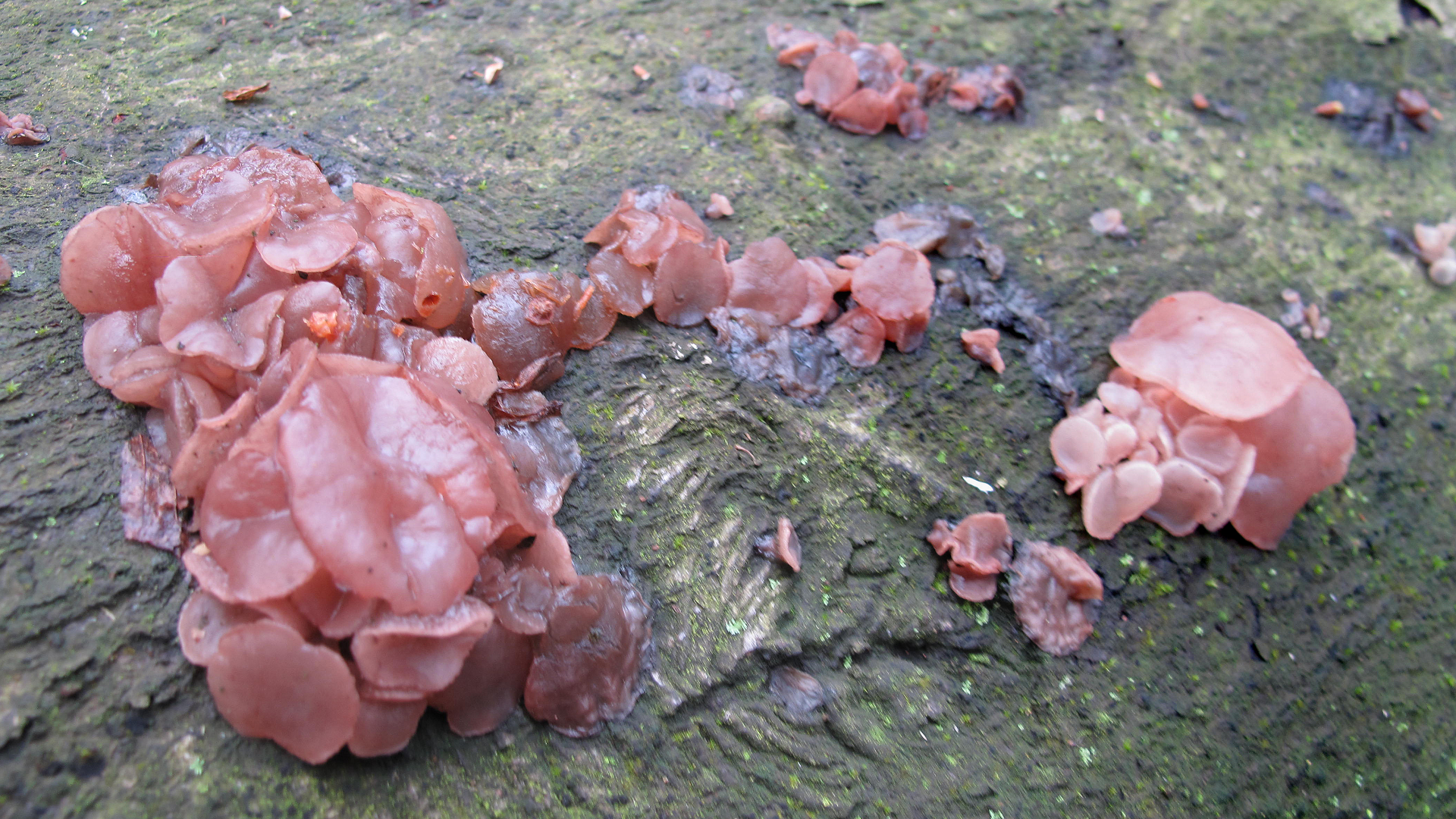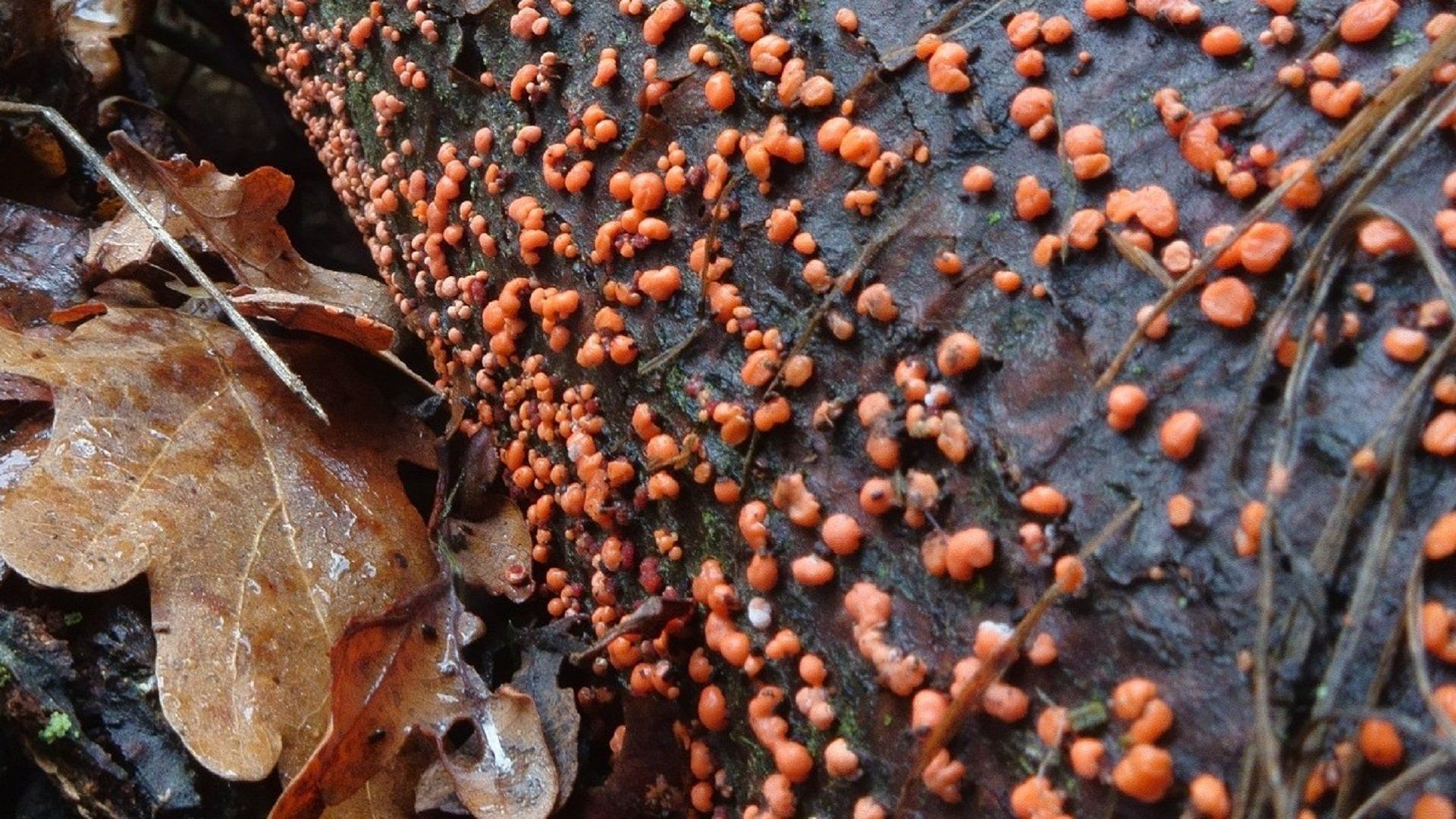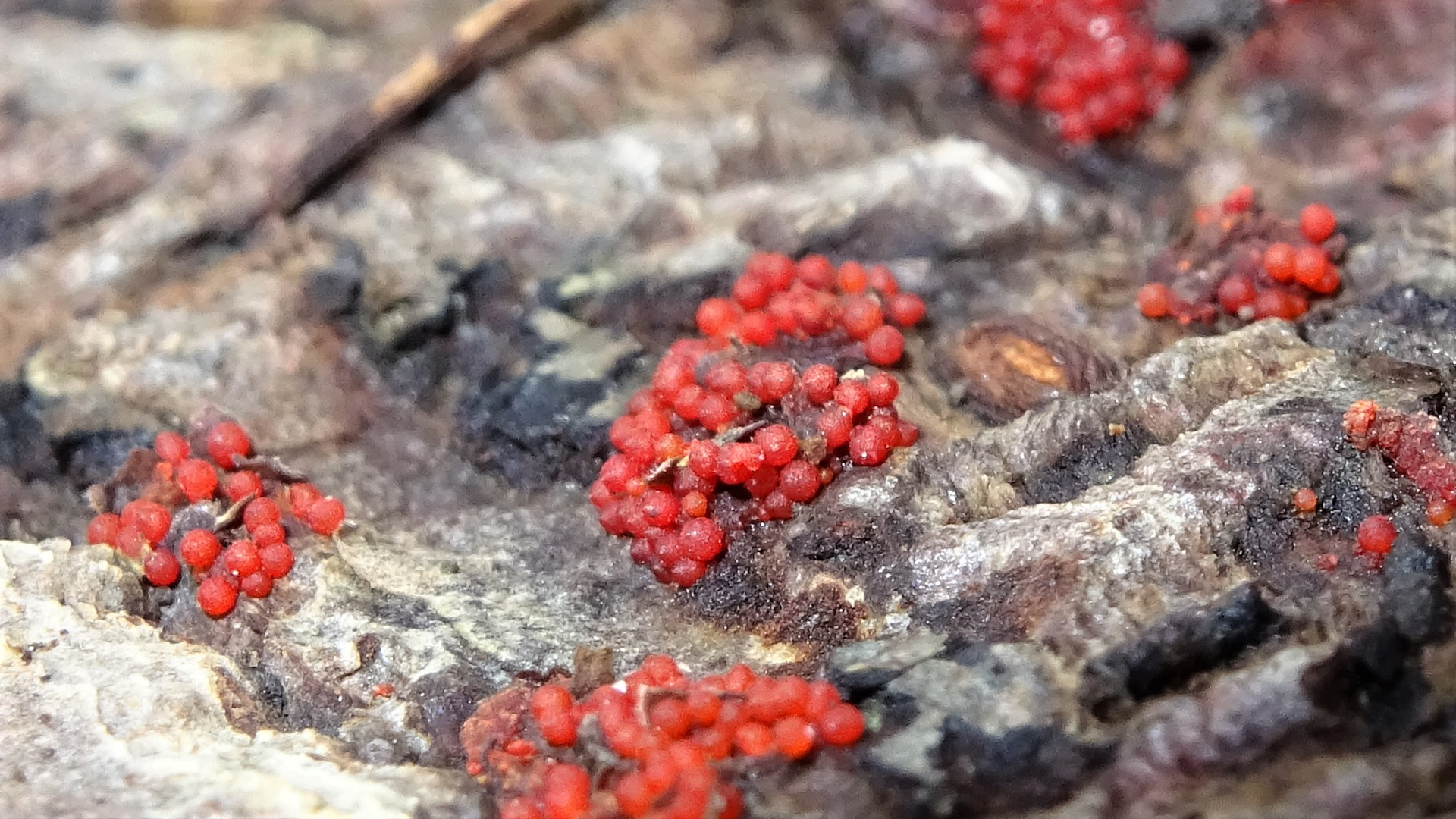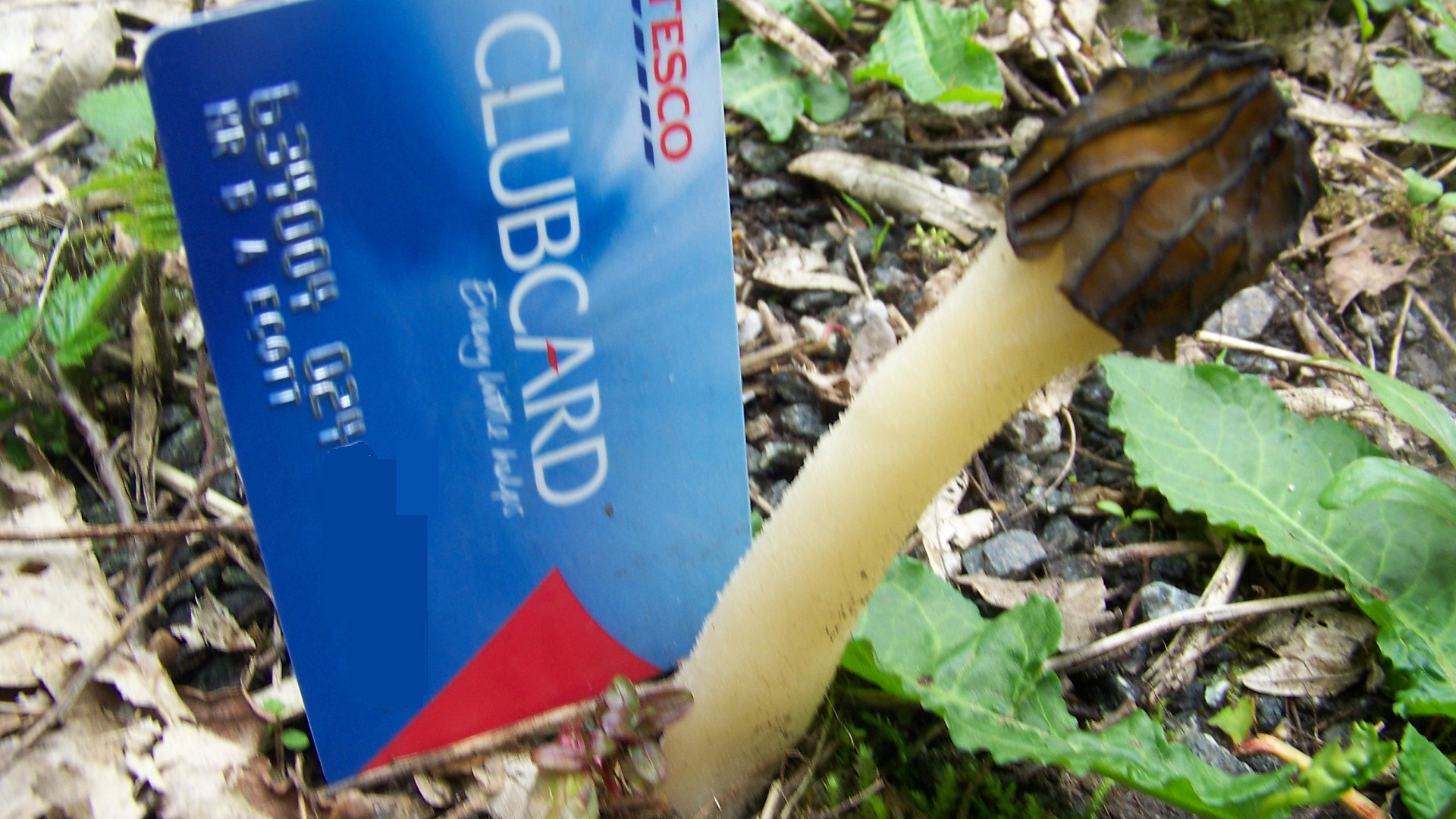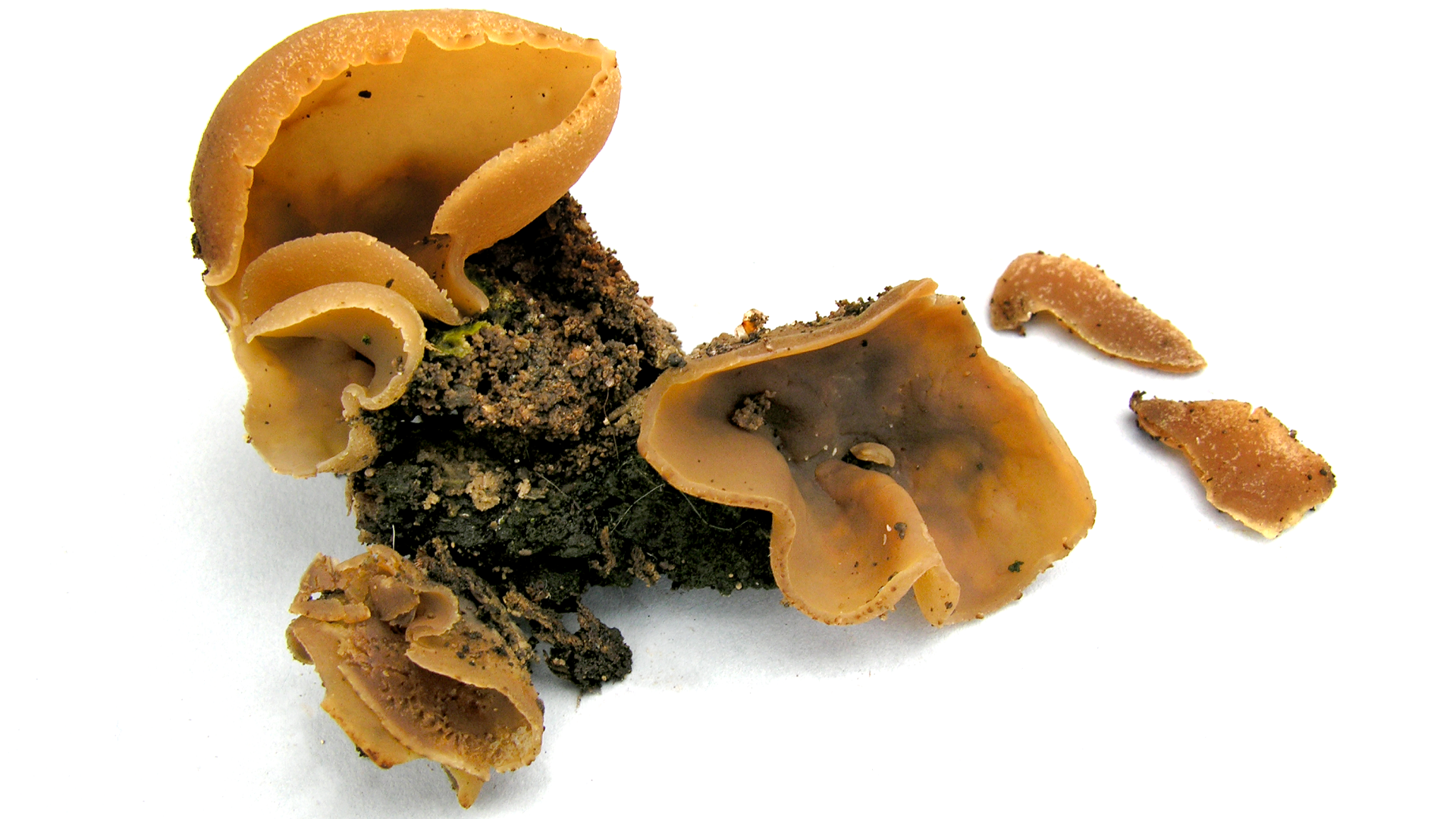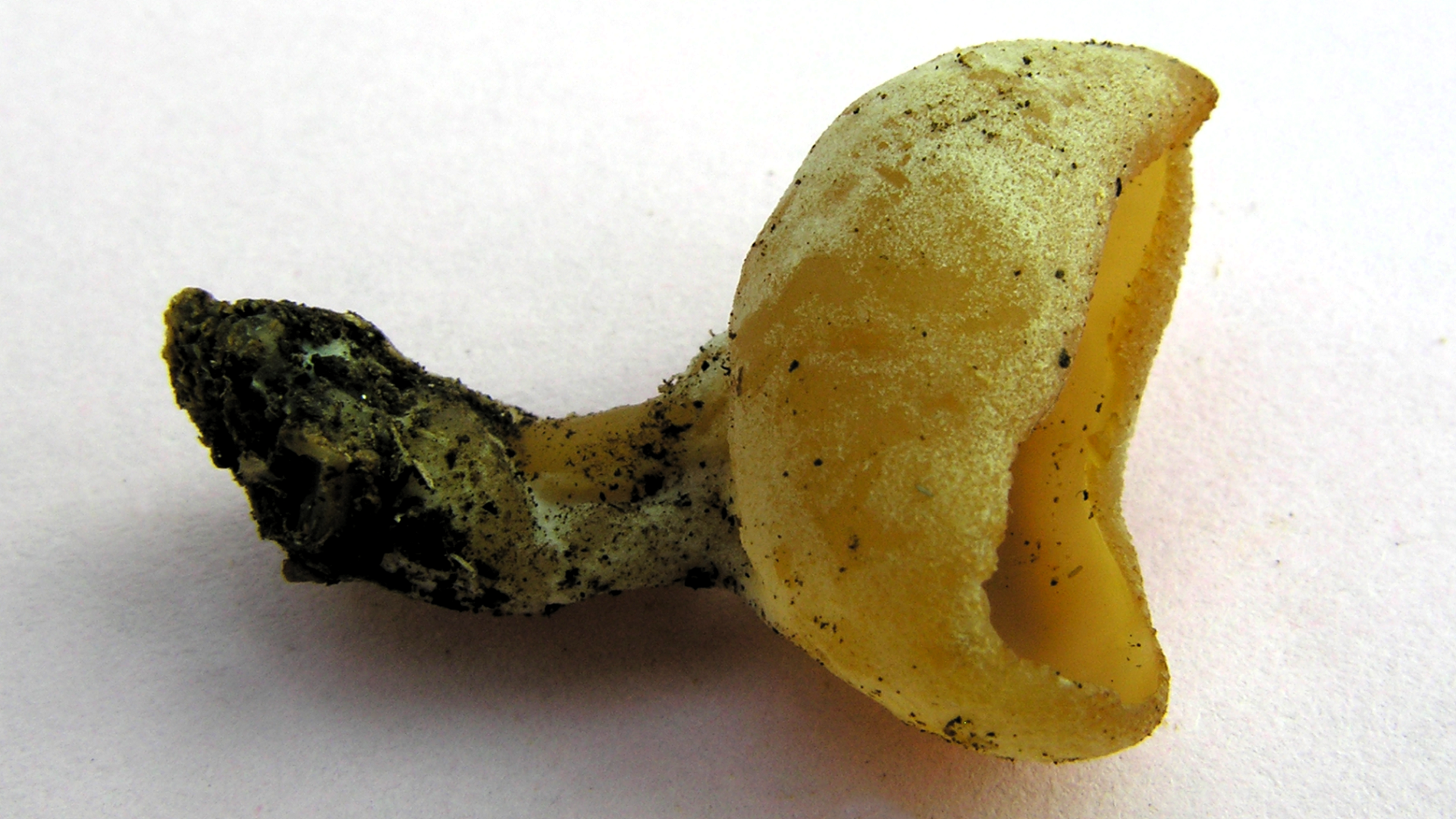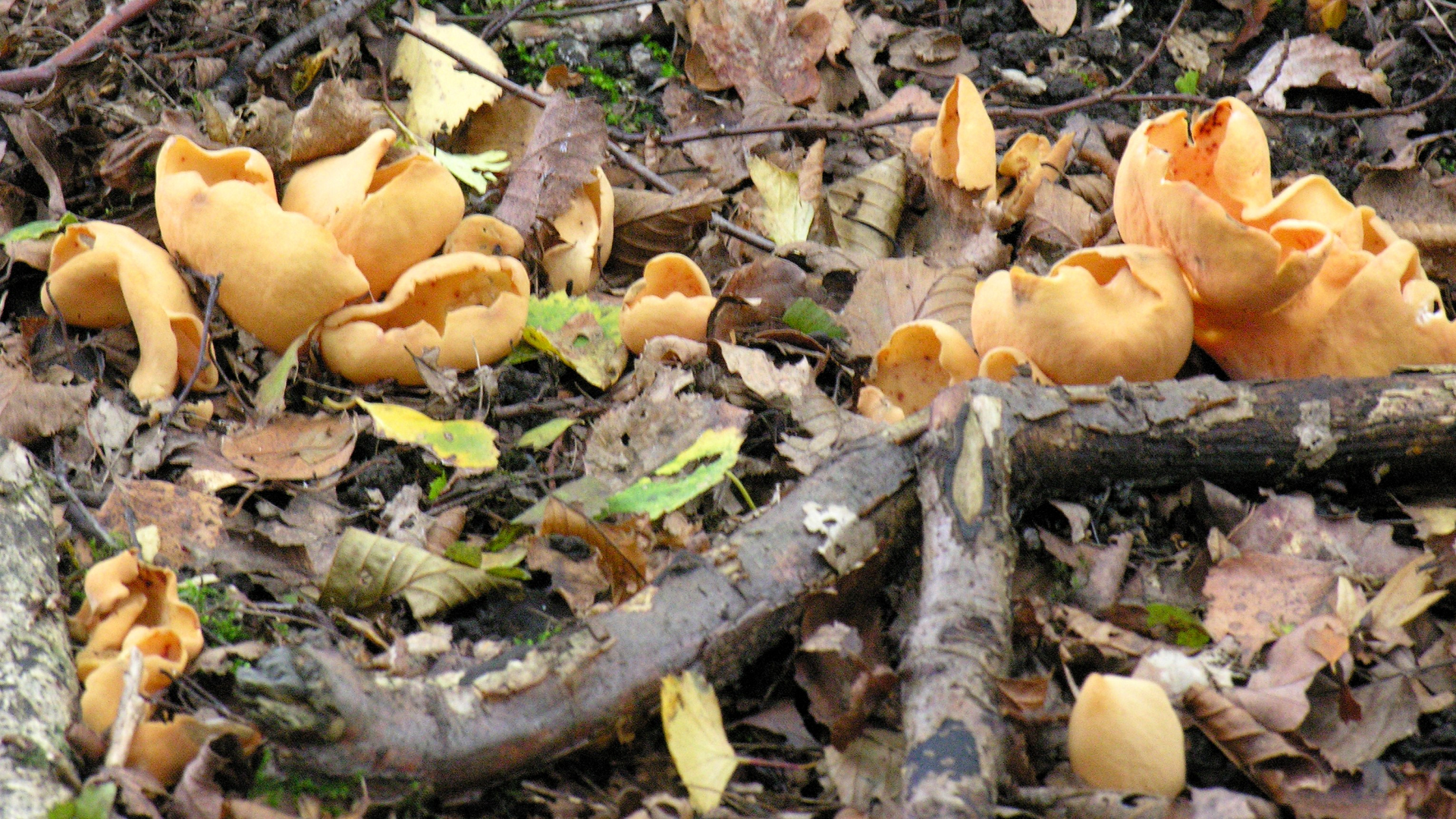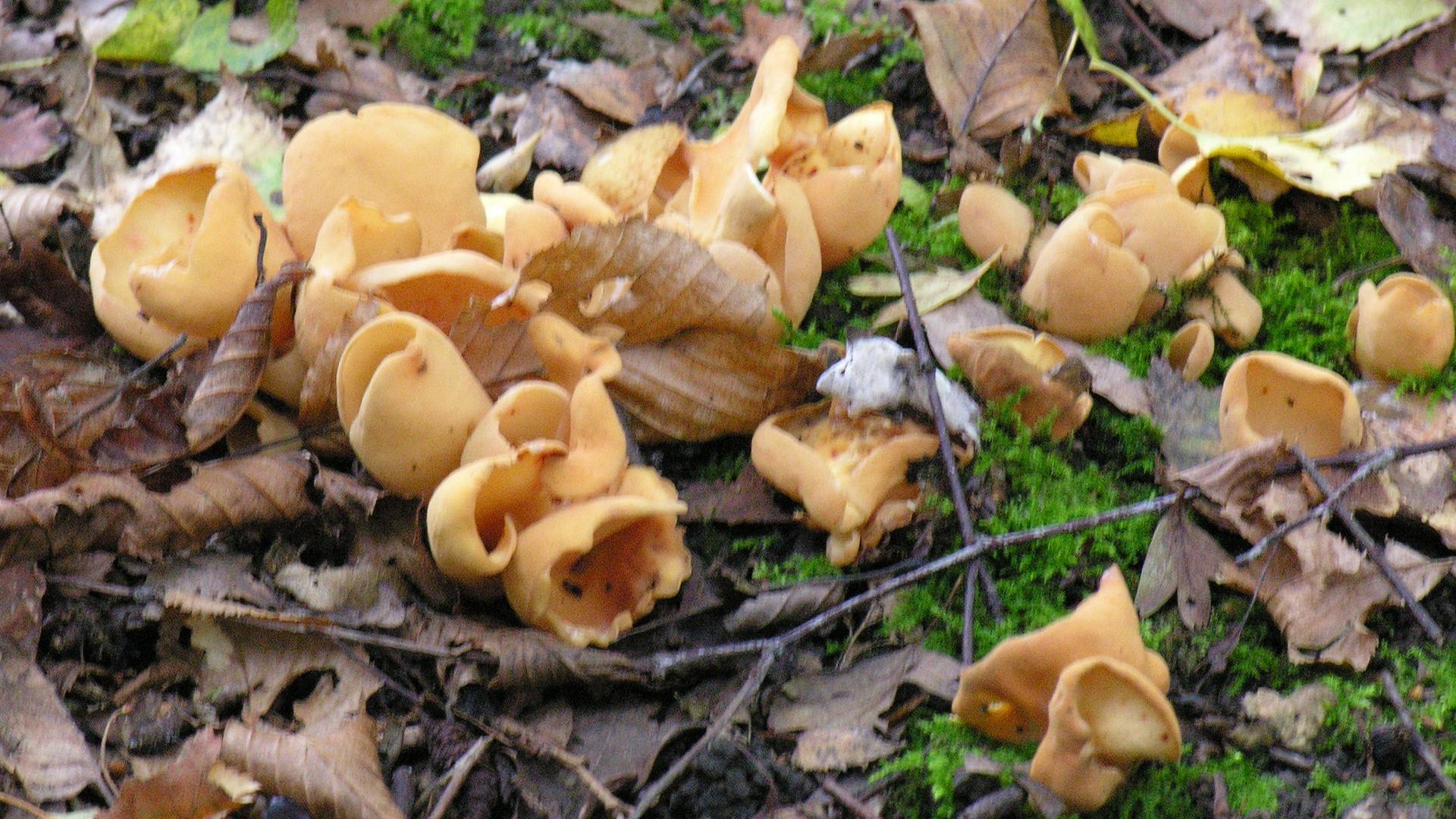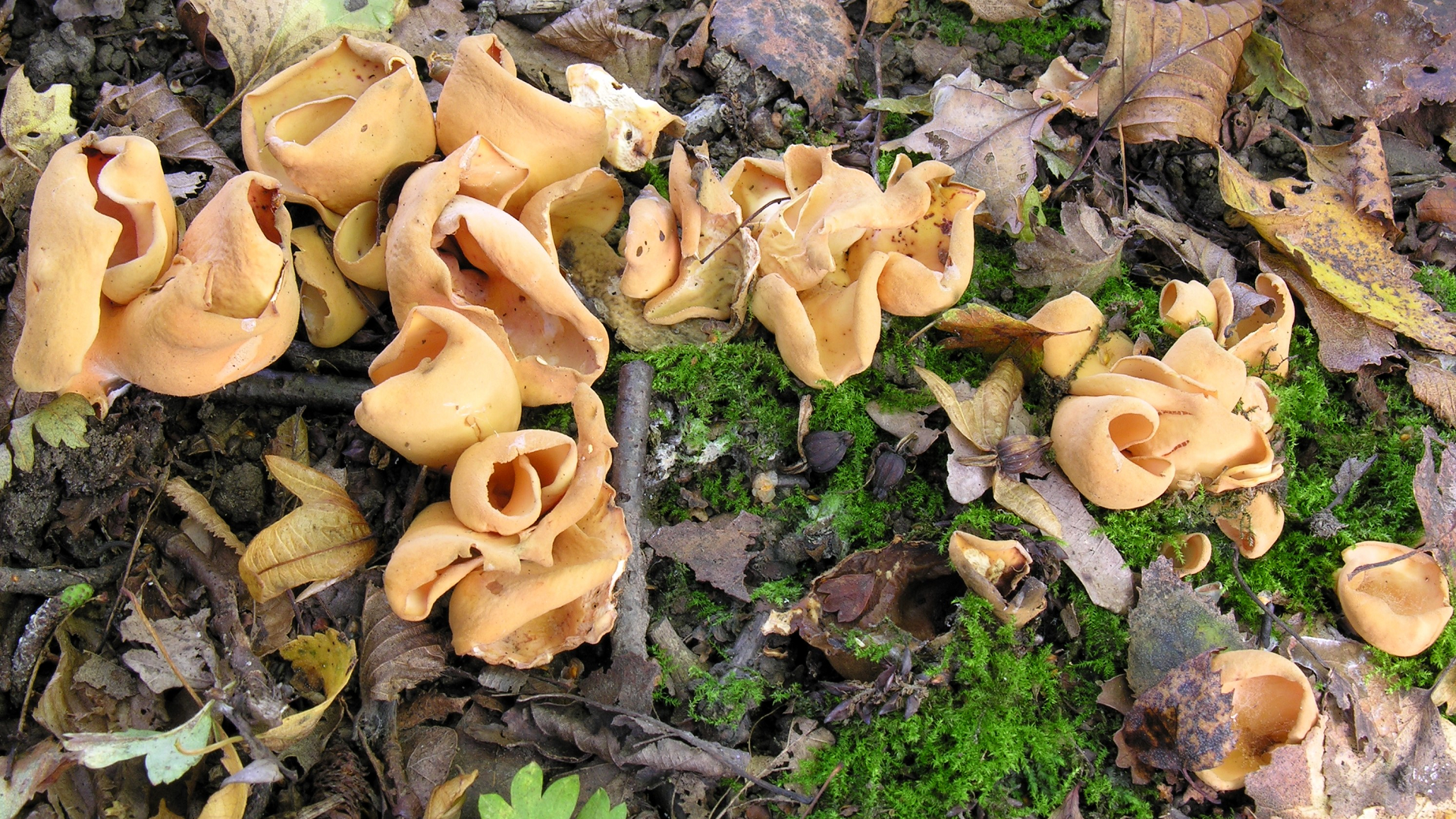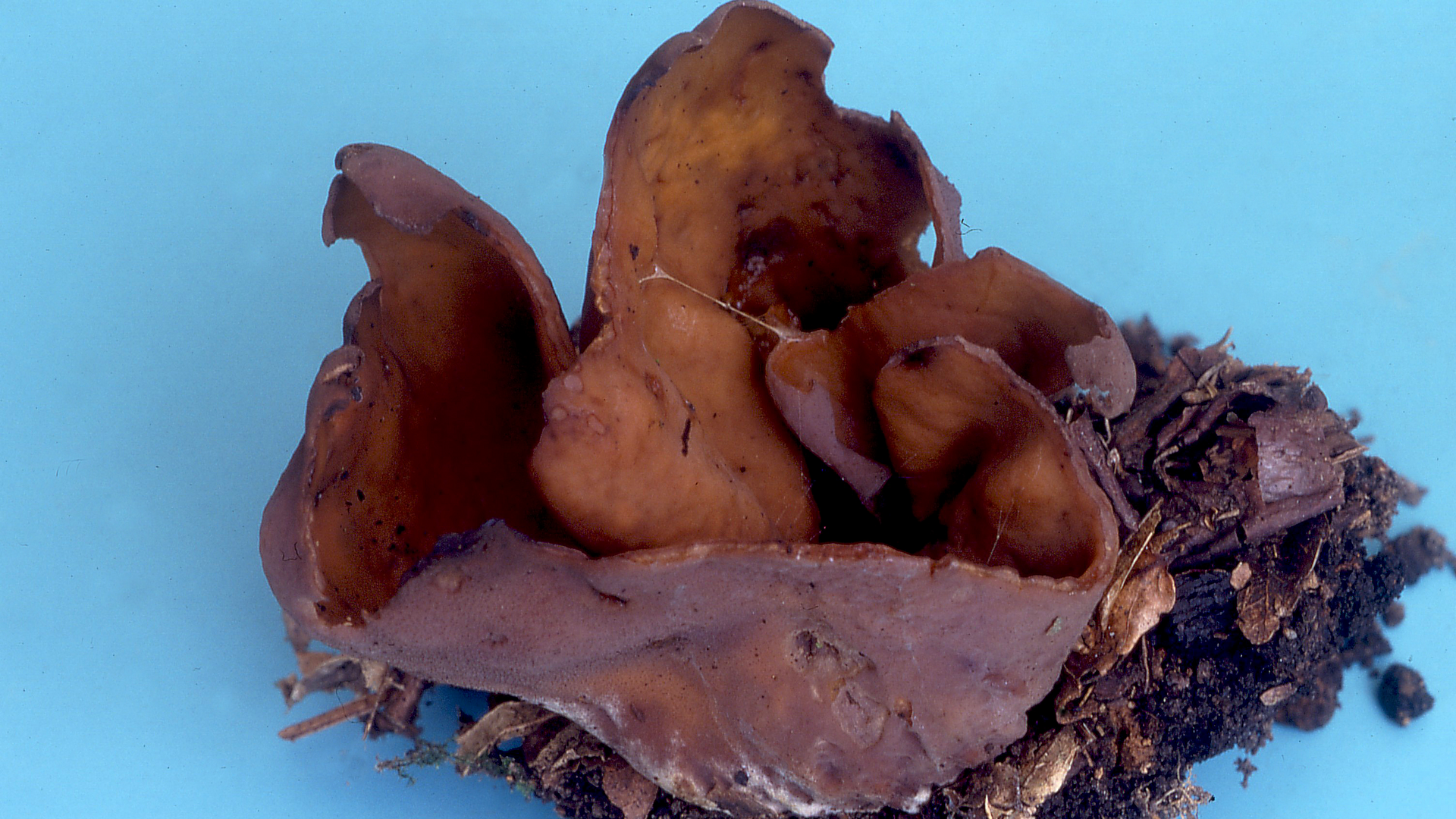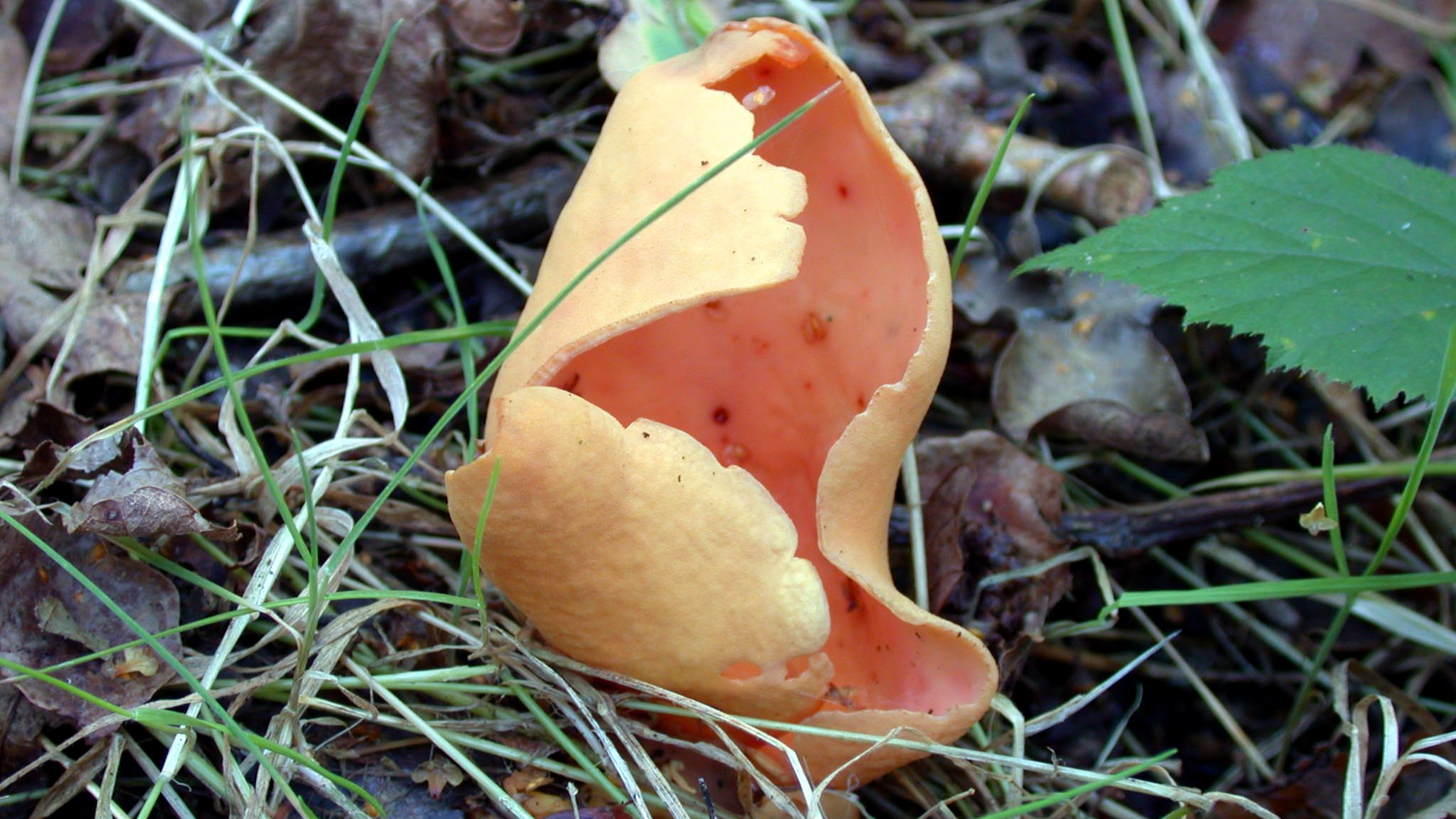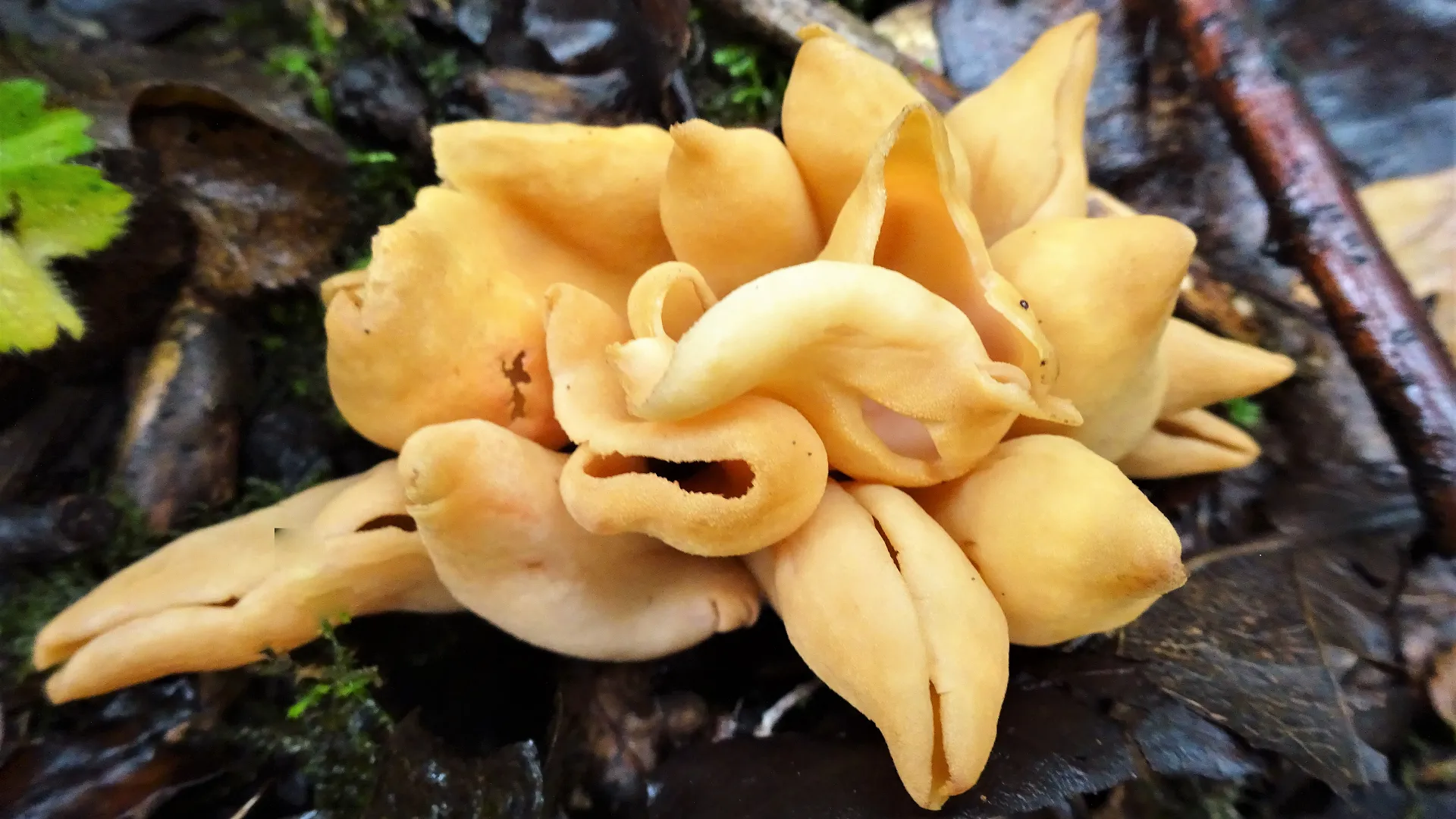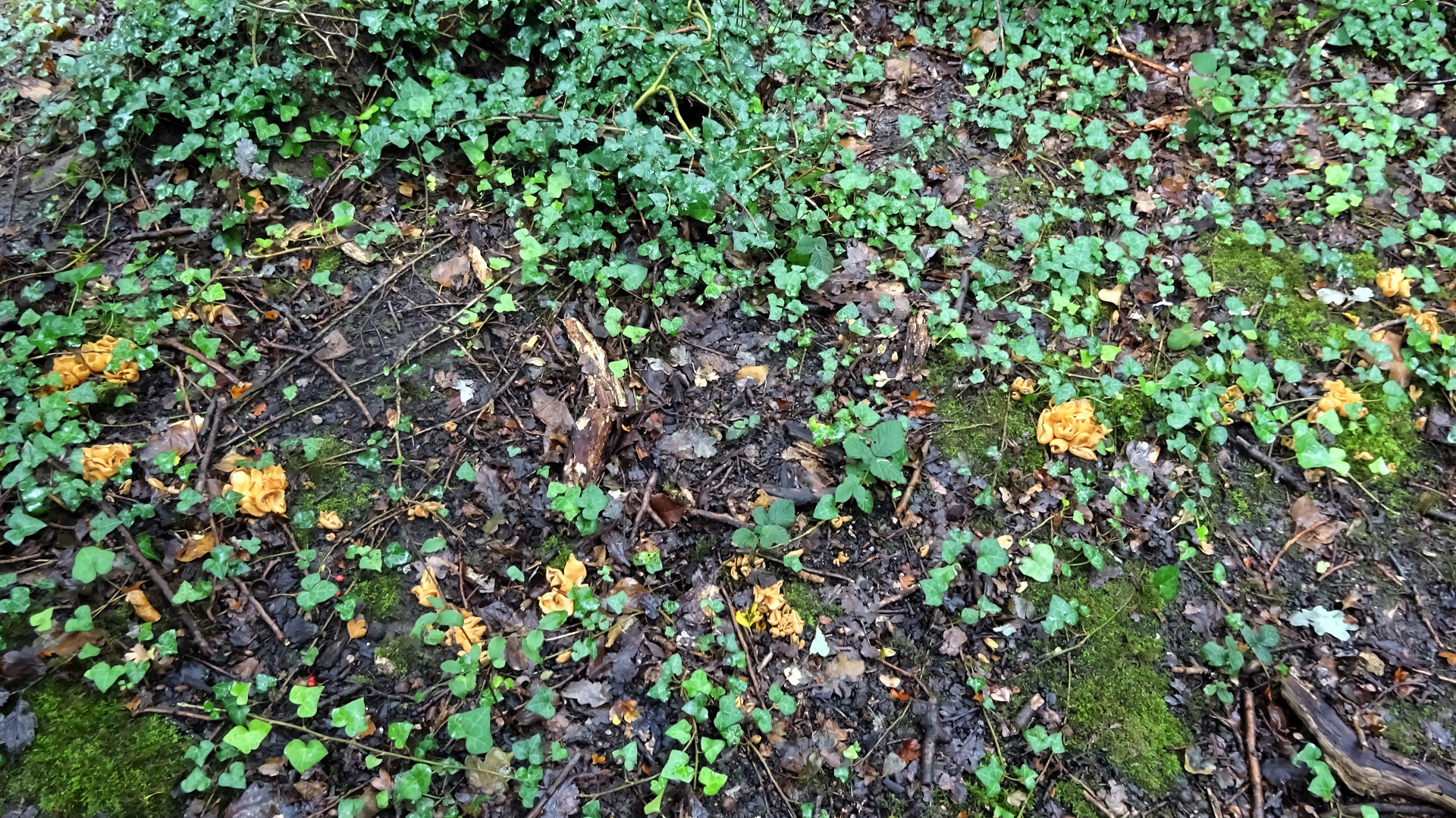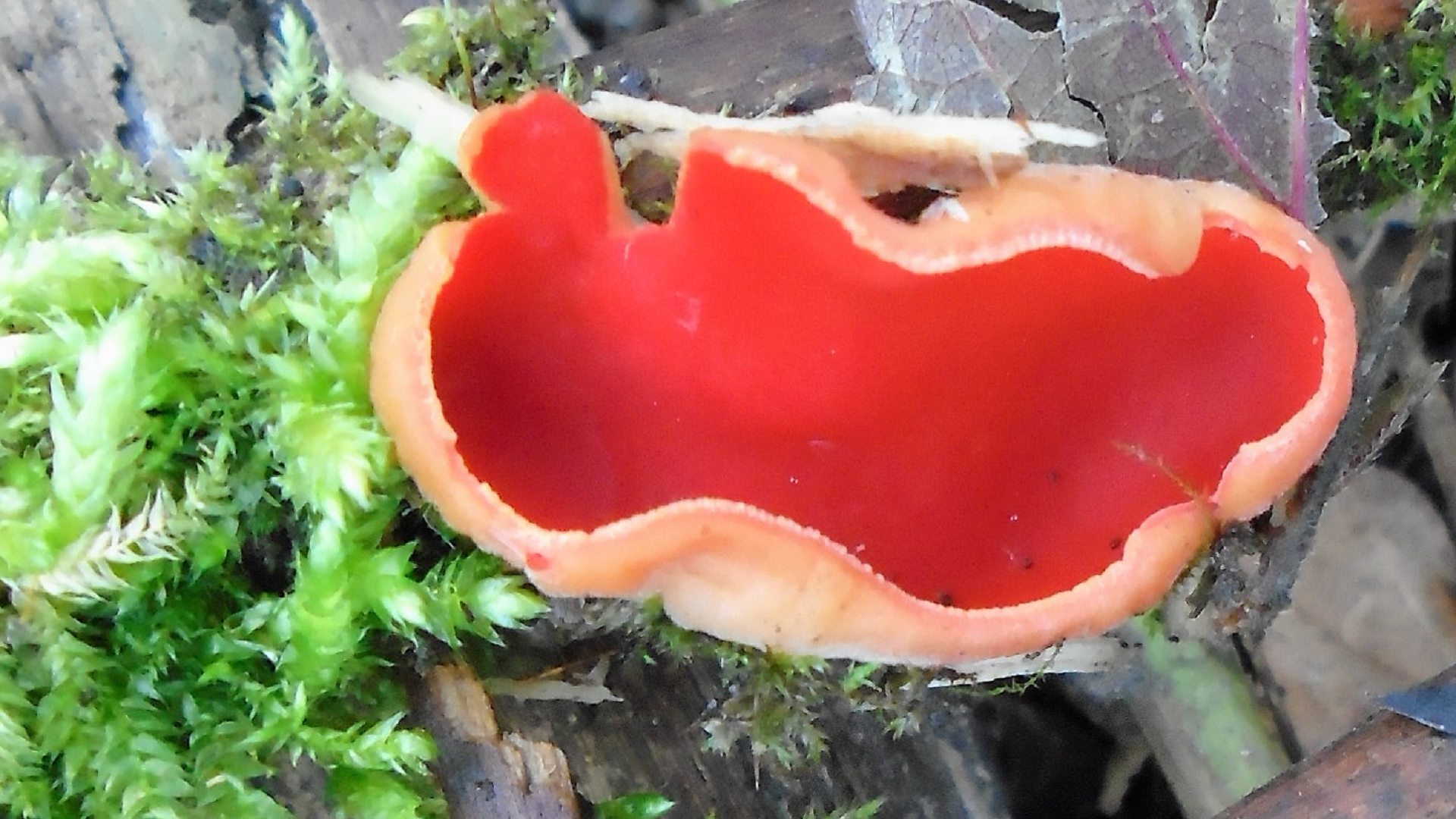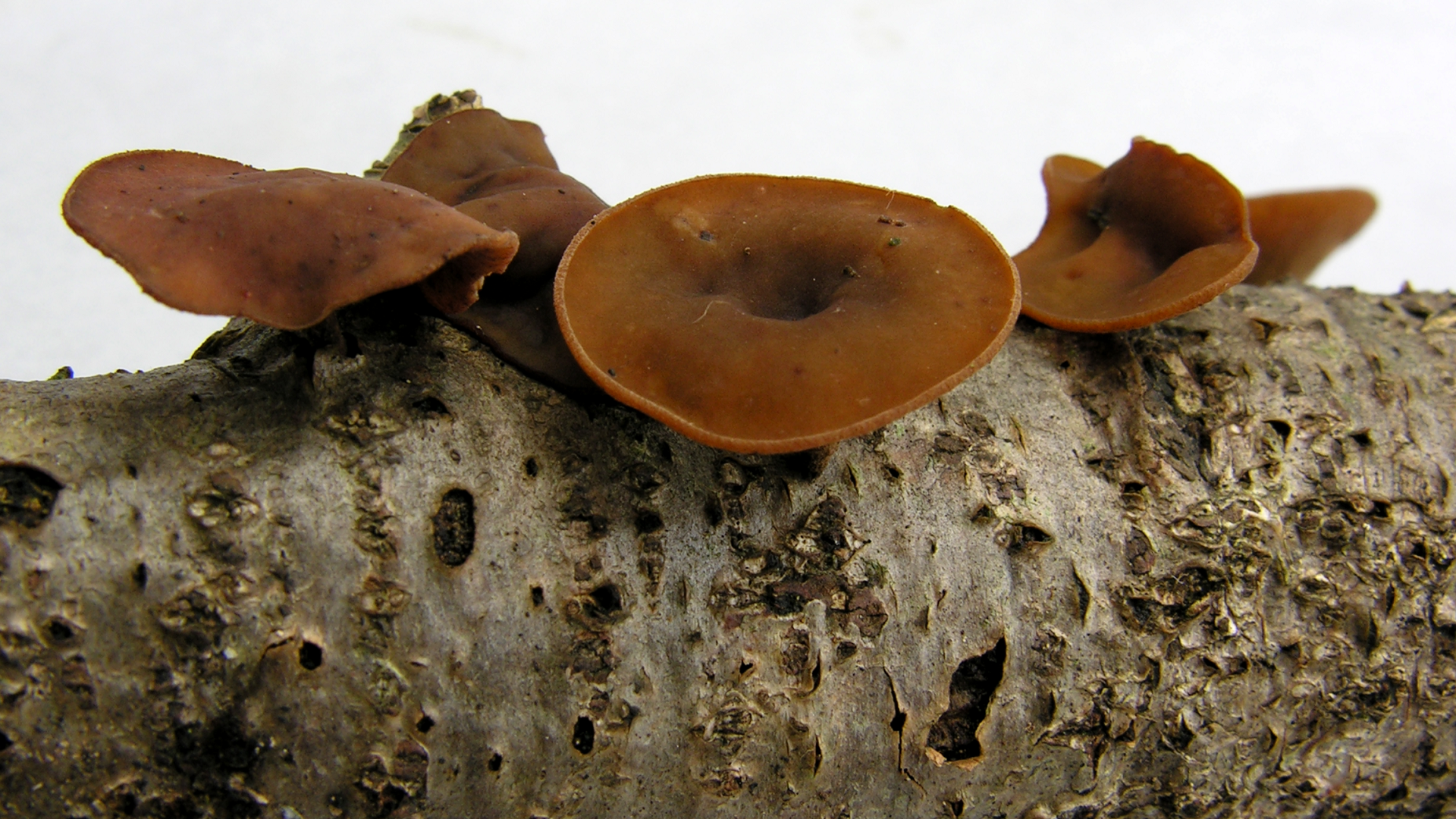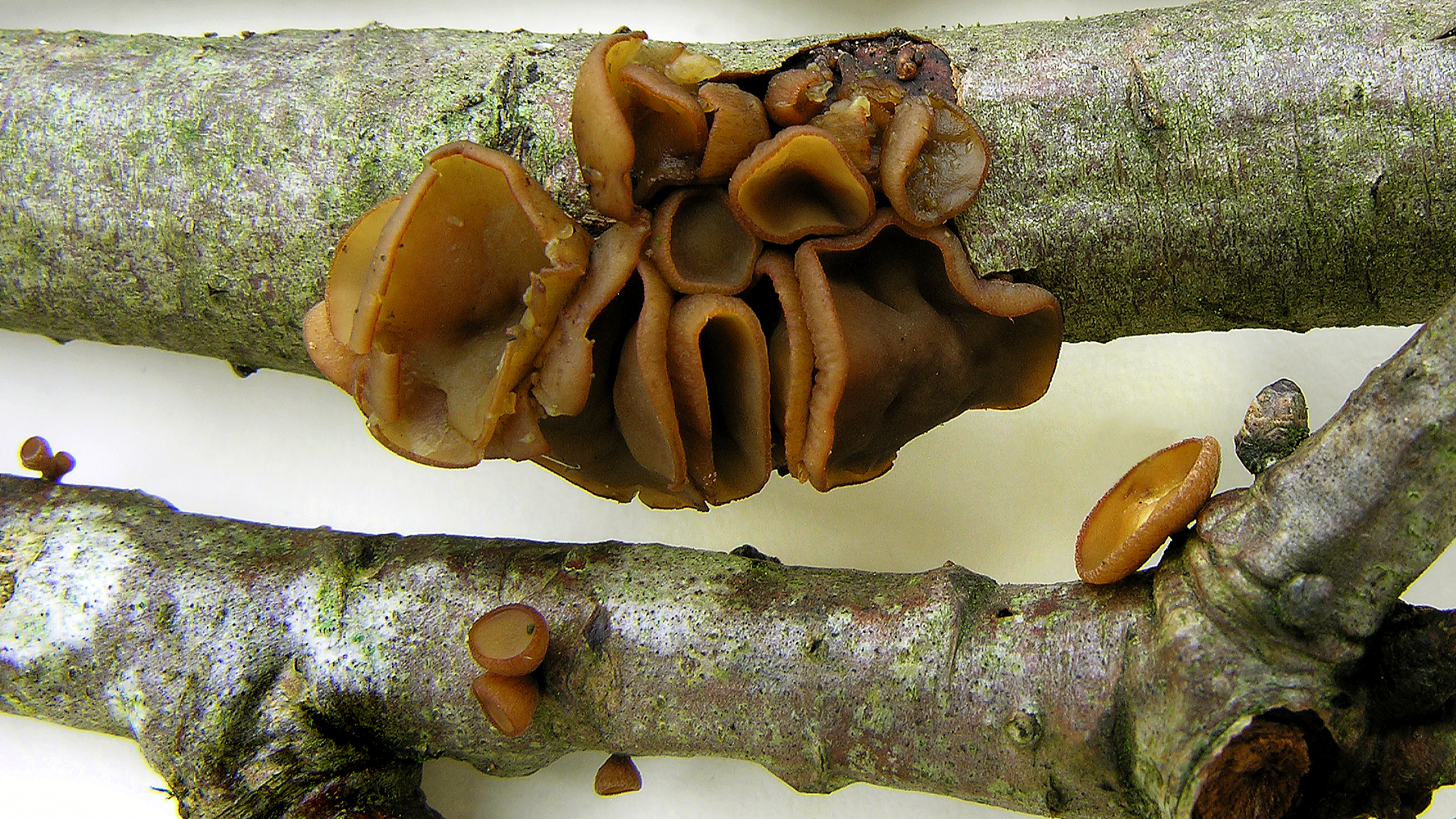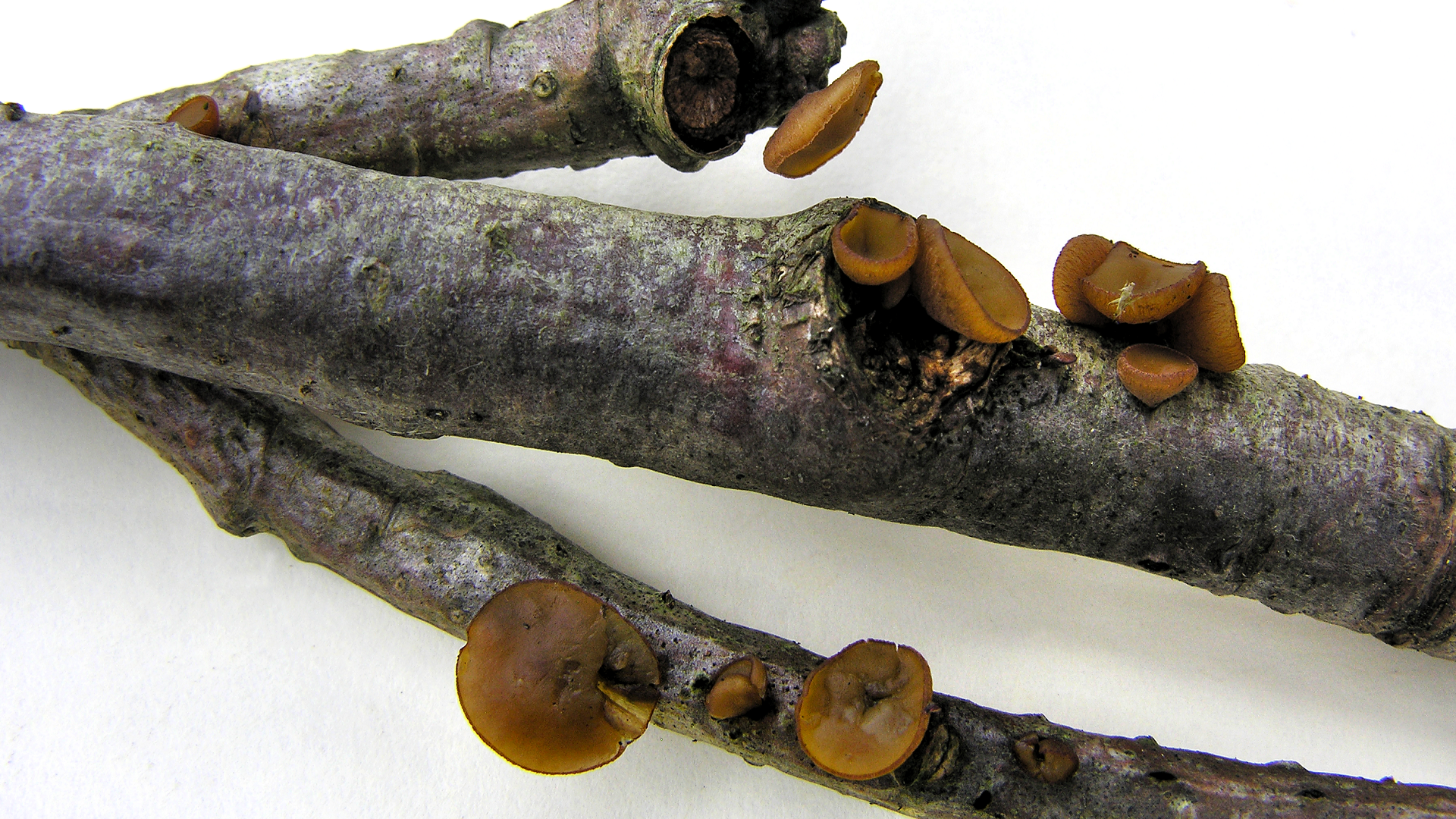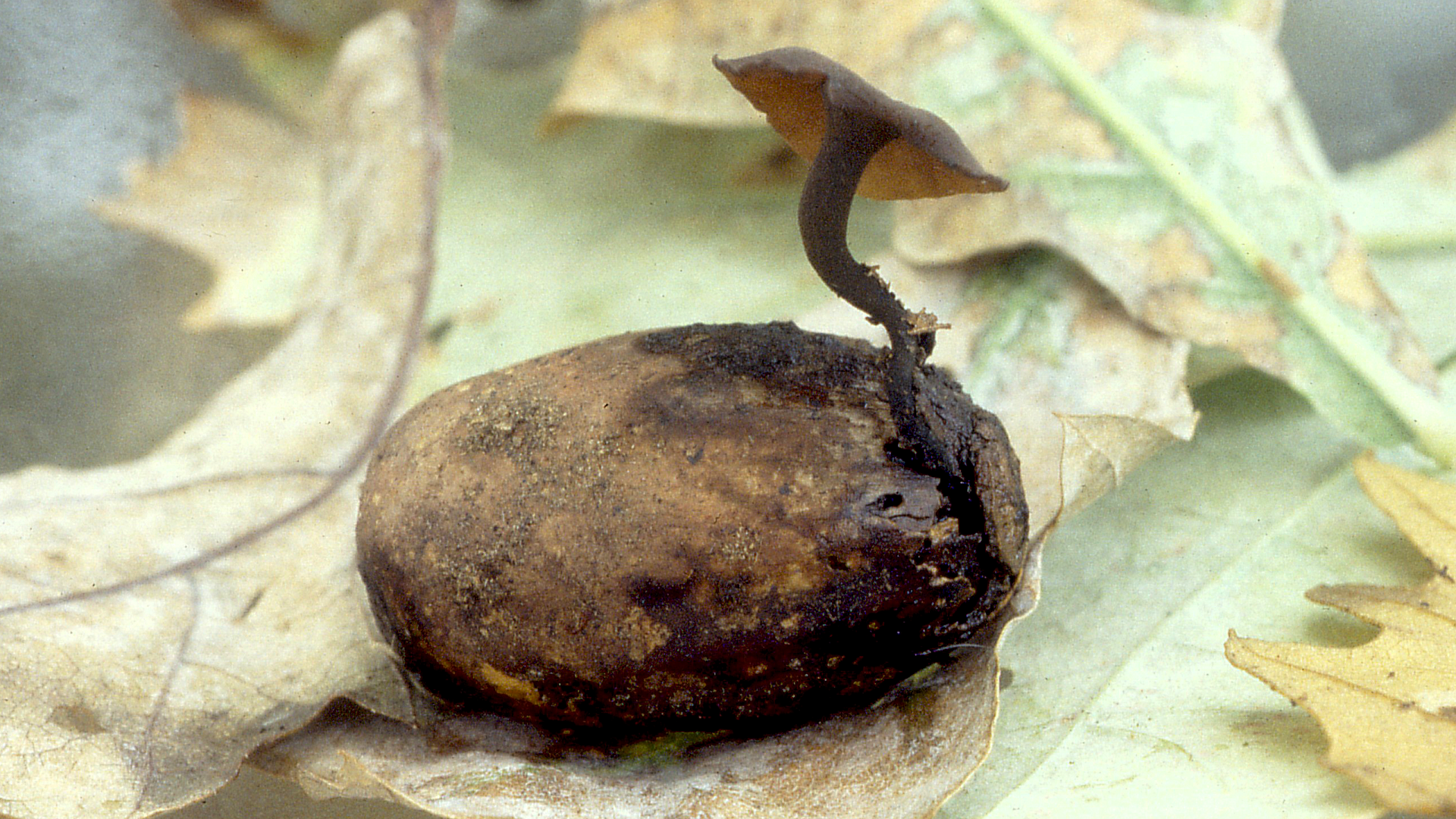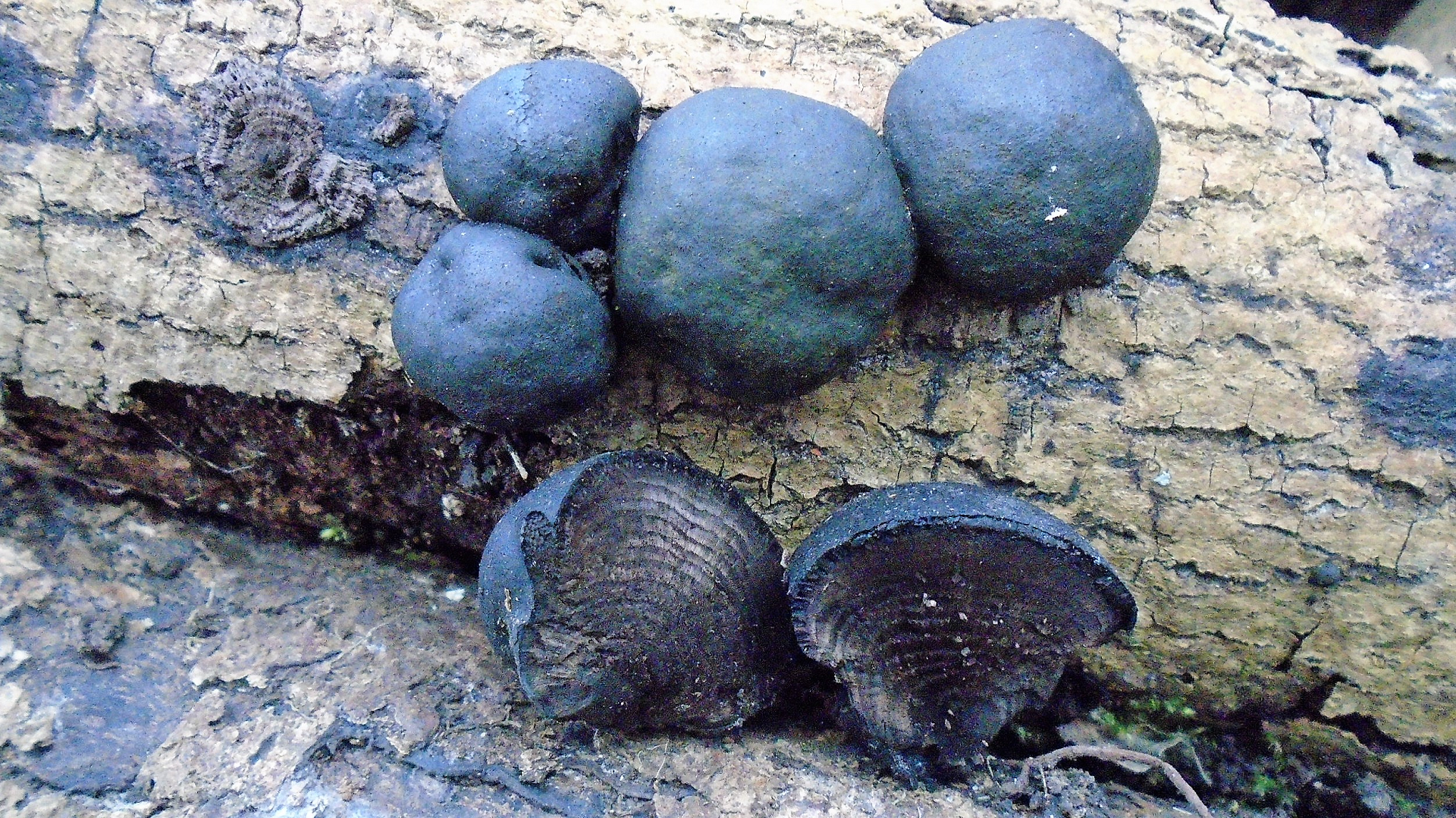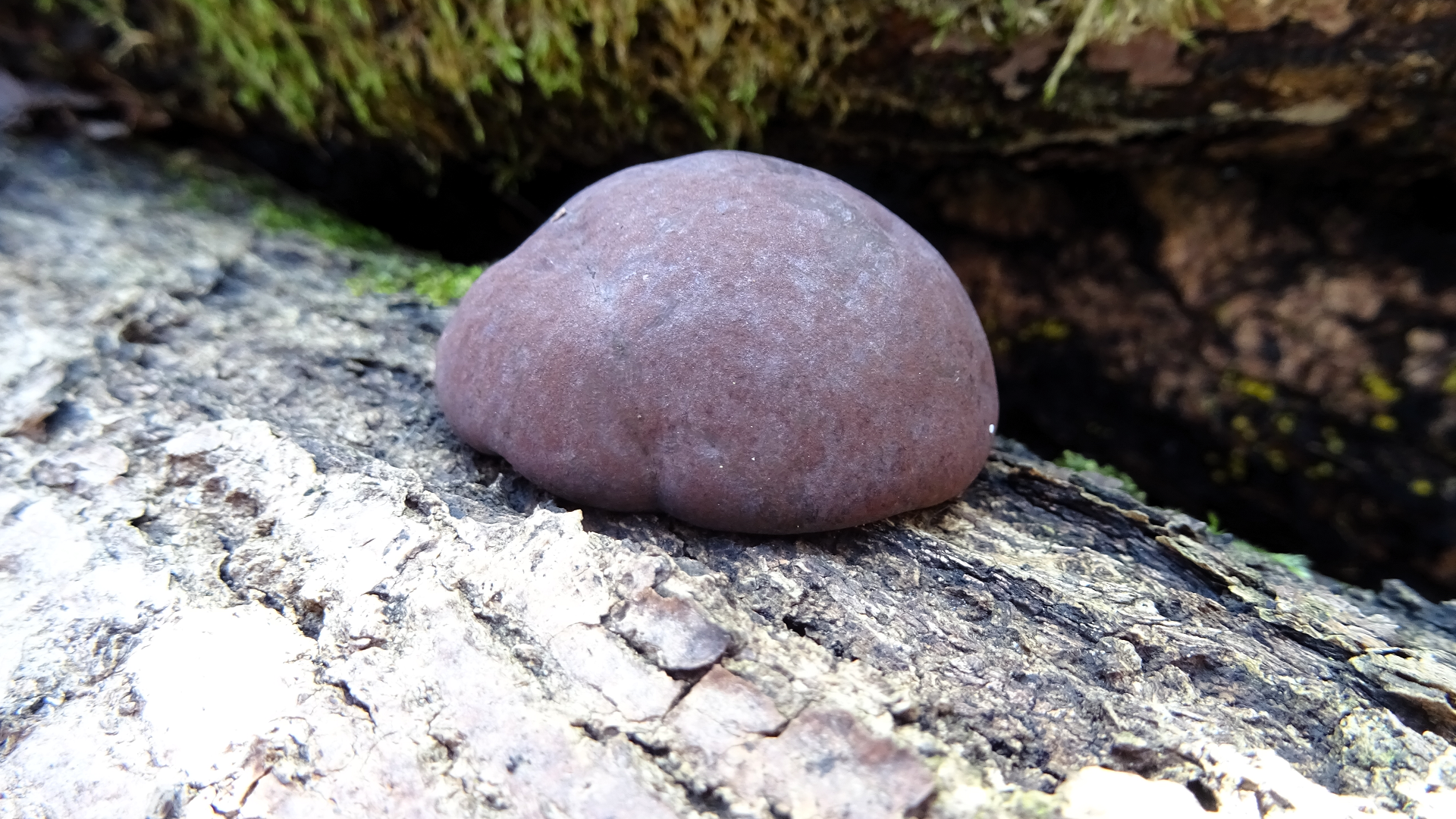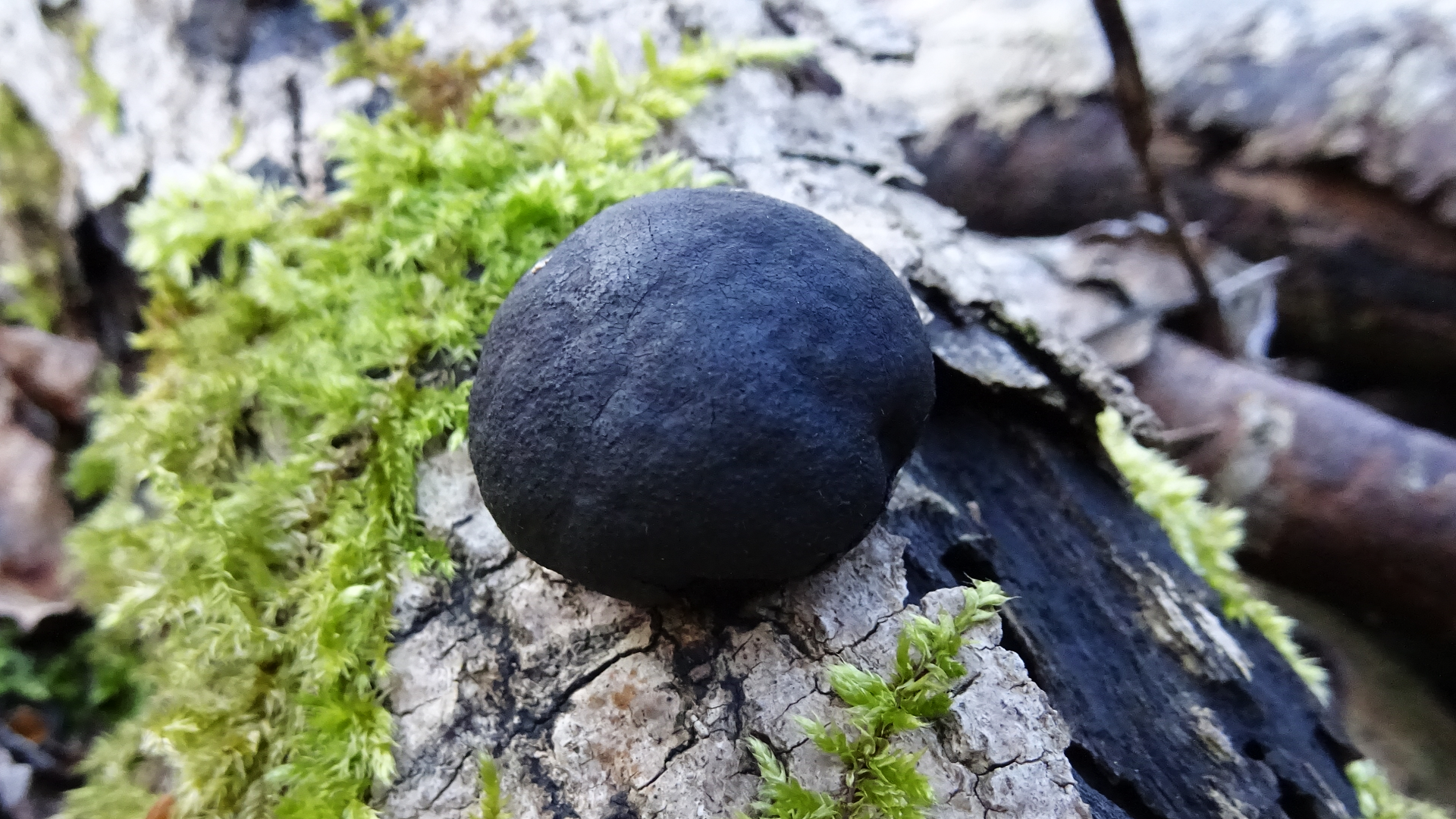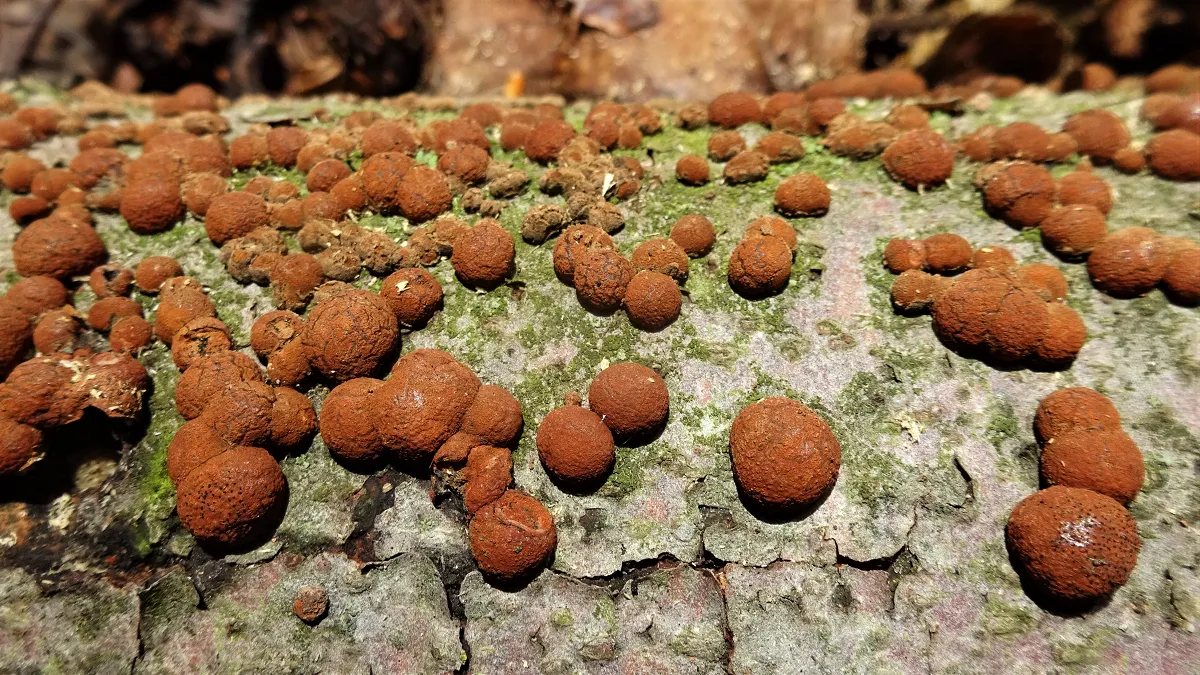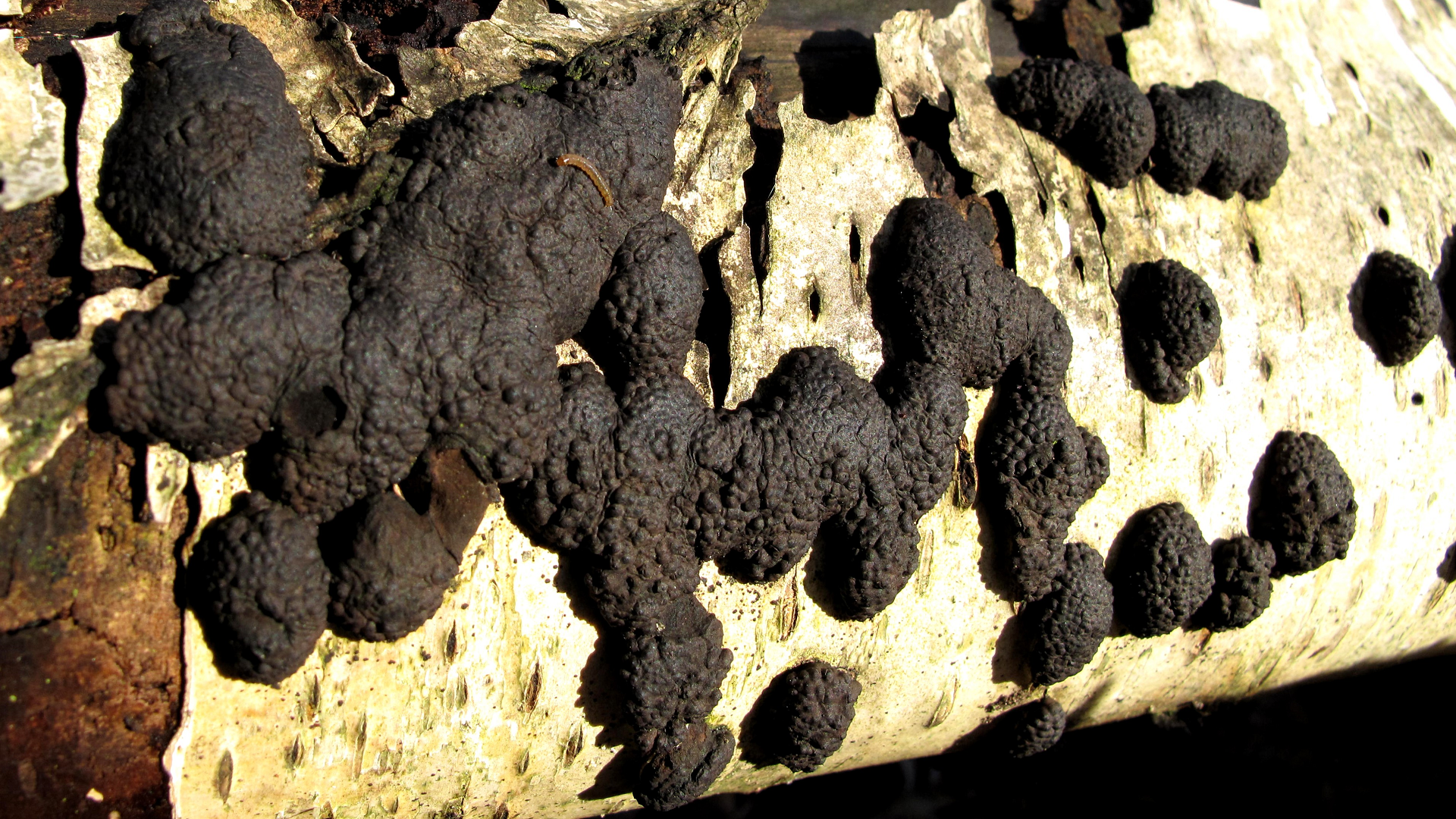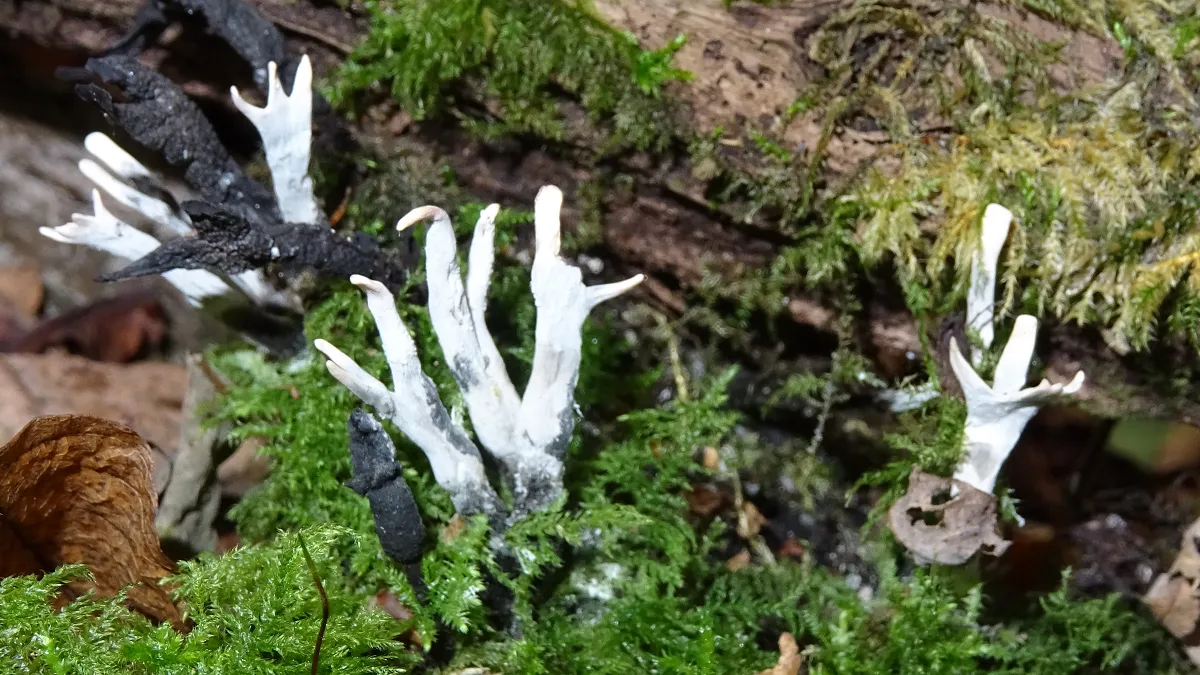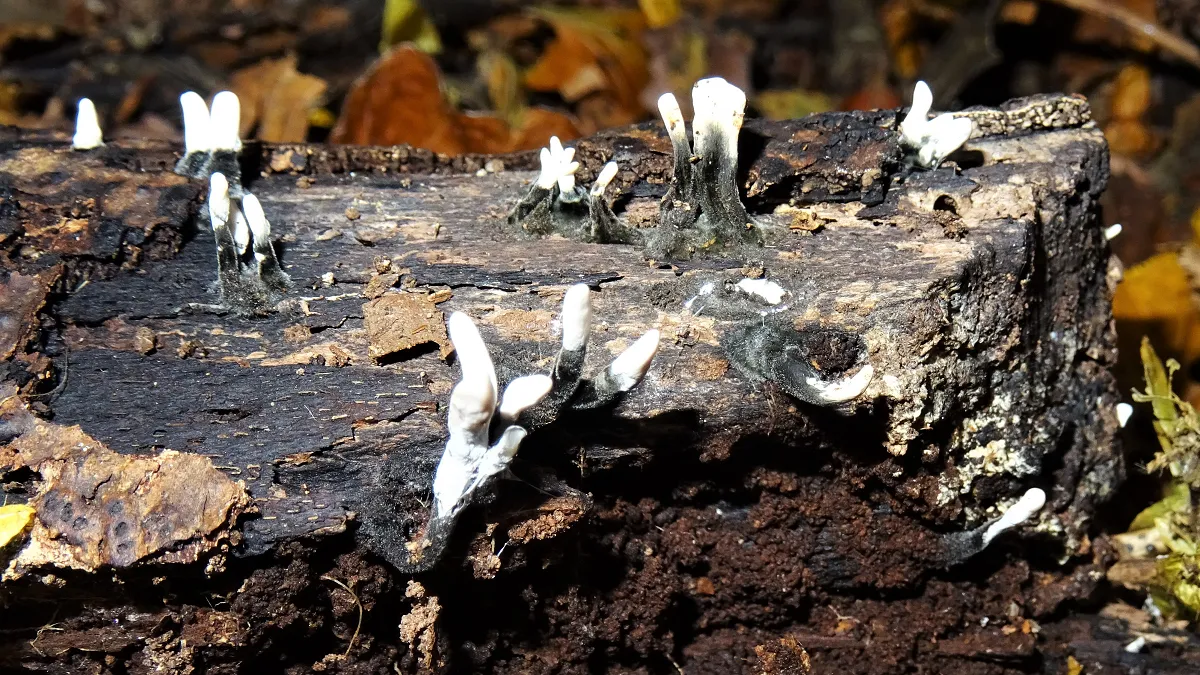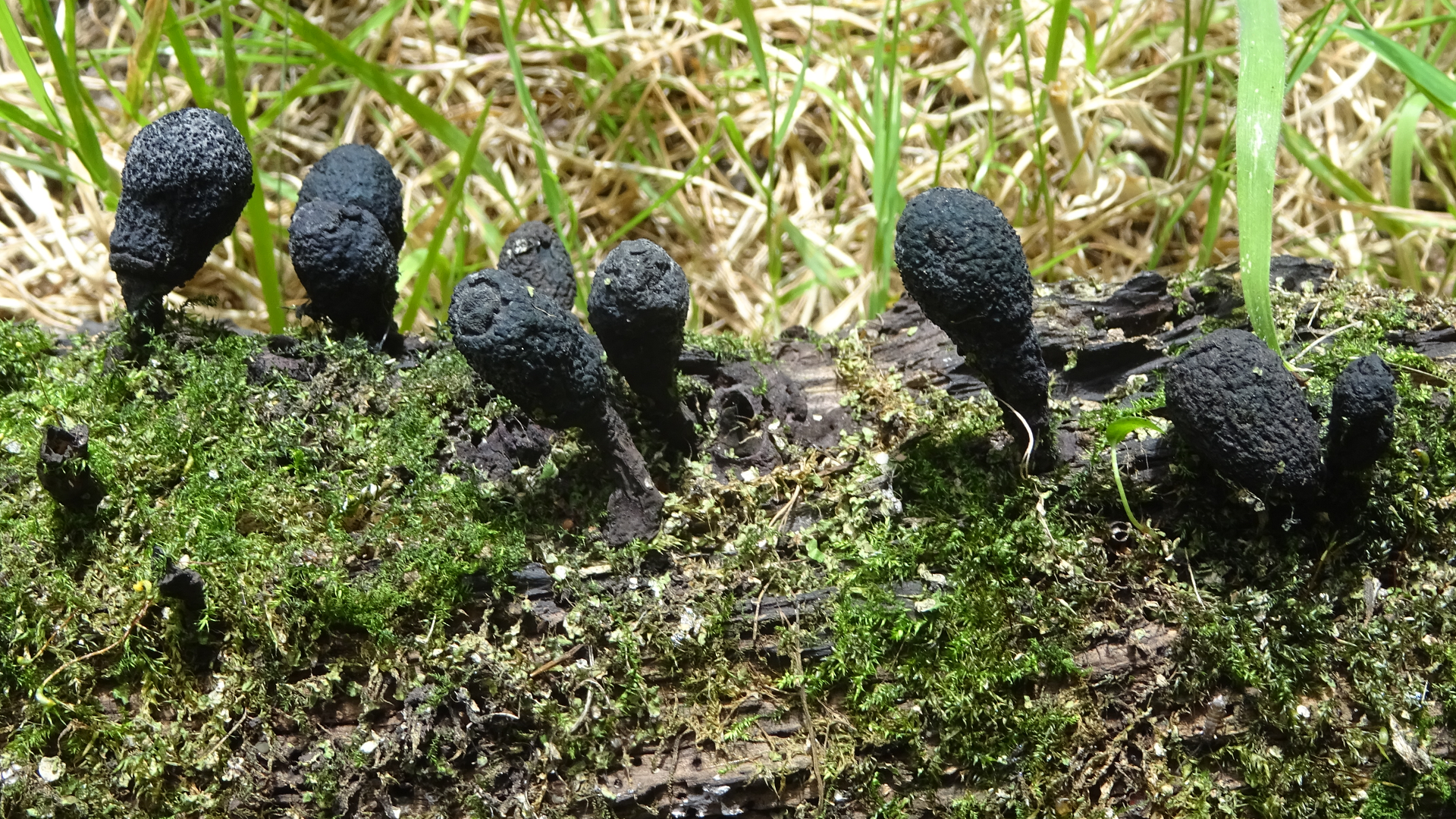Ascomycetes are a large and diverse group of fungi that create spores inside a microscopic sac. They are identified by this unique spore-producing structure, which is often contained within larger, visible cup or flask-like fruiting bodies.
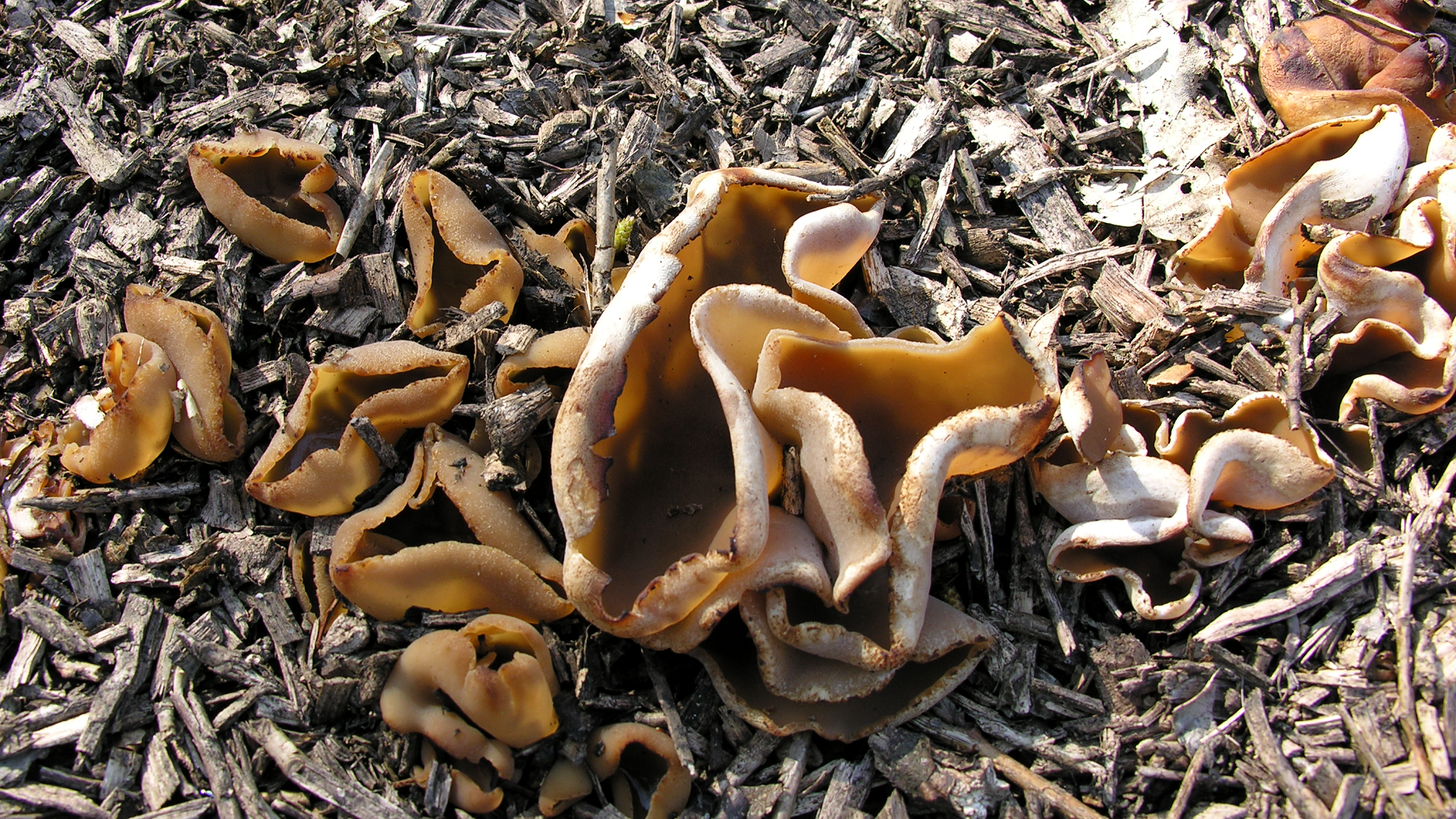
Name: Charcoal Cup Peziza echinospora
Description: The cups are up to 10cm in diameter. The inner surface is dark brown and smooth while the outer surface is pale, sometimes almost white, and rough.
Habitat: Associated with sites where bonfires have taken place. Often found on burnt wood chips from late spring until early autumn.
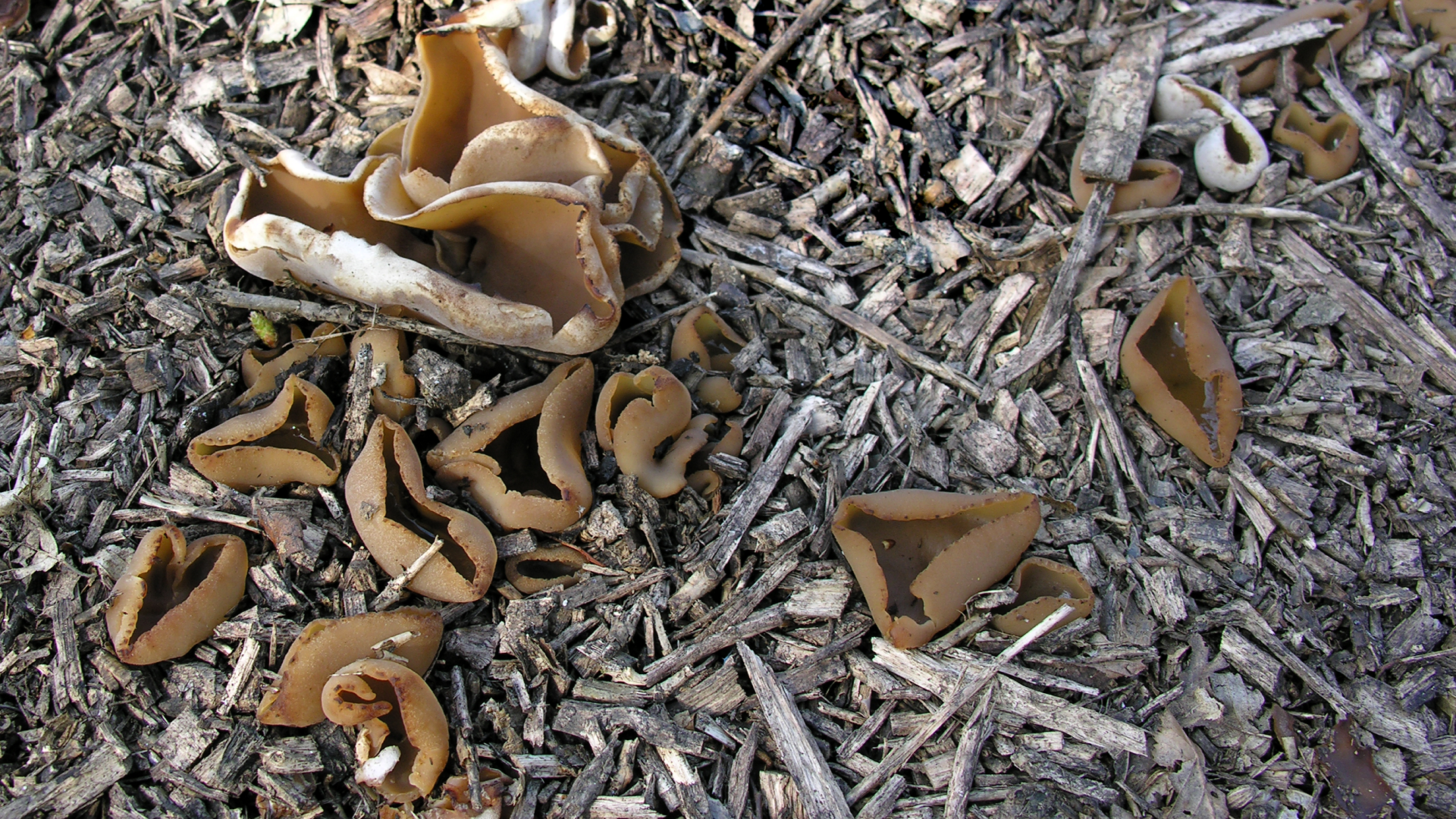
Name:
Charcoal Cup Peziza echinospora
#

Name:
Description:
Habitat:
#

Name: Short-haired Disco Lachnum brevipilosum
Description: Tiny, white caps and stipes. The name refers to the short hairs that are visible on the apothecia (cup-shaped fruiting bodies).
Habitat: Saprobic fungus with very tiny fruiting bodies that grow in large groups underneath rotten logs.
#
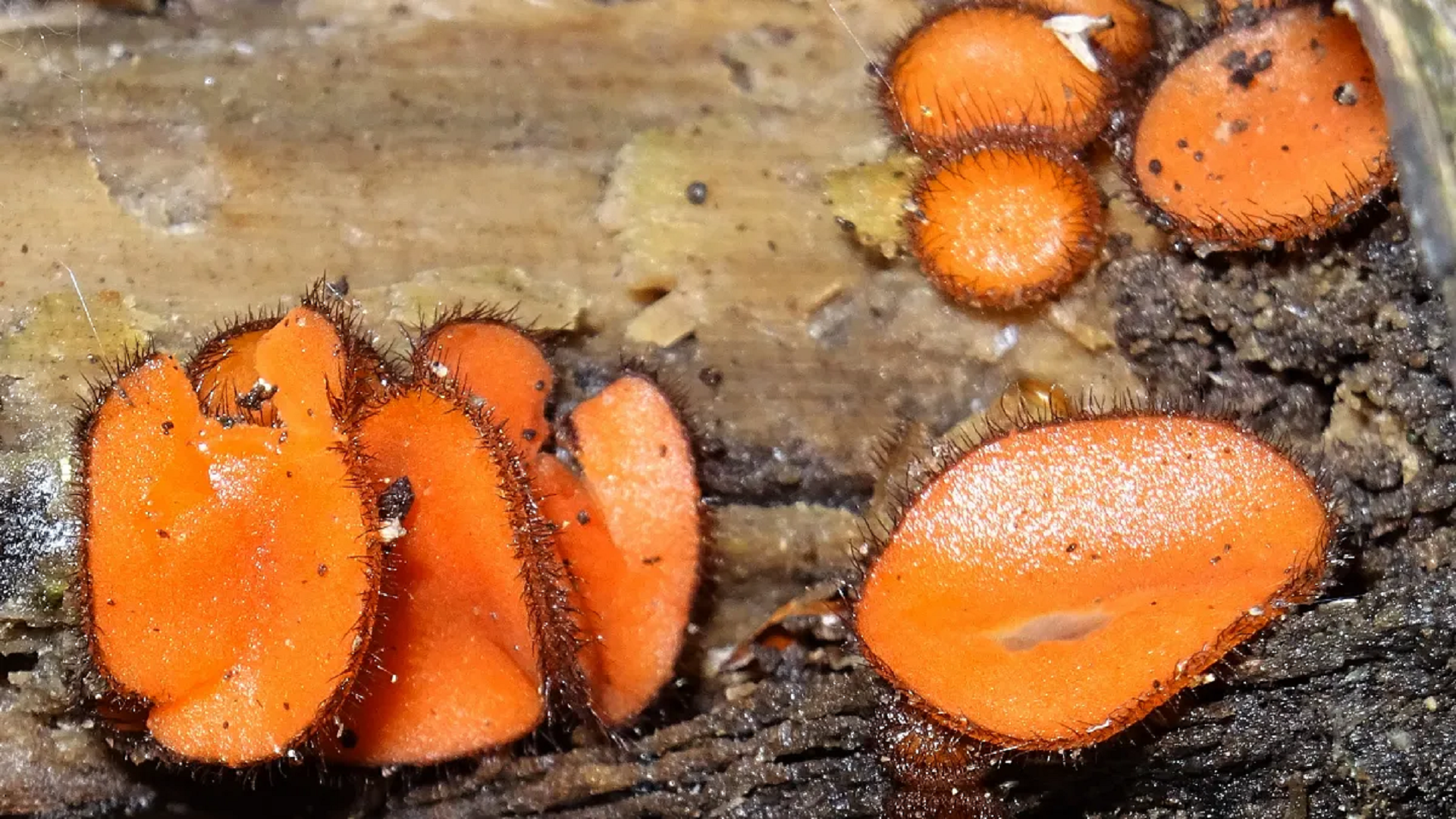
Name: Common Eyelash Scutellinia scutellata
Description: Tiny saprophytic fungus, <=4mm across, with eyelashes around the edge of its orange cups.
Habitat: Grows on well-rotted wood in damp habitats.
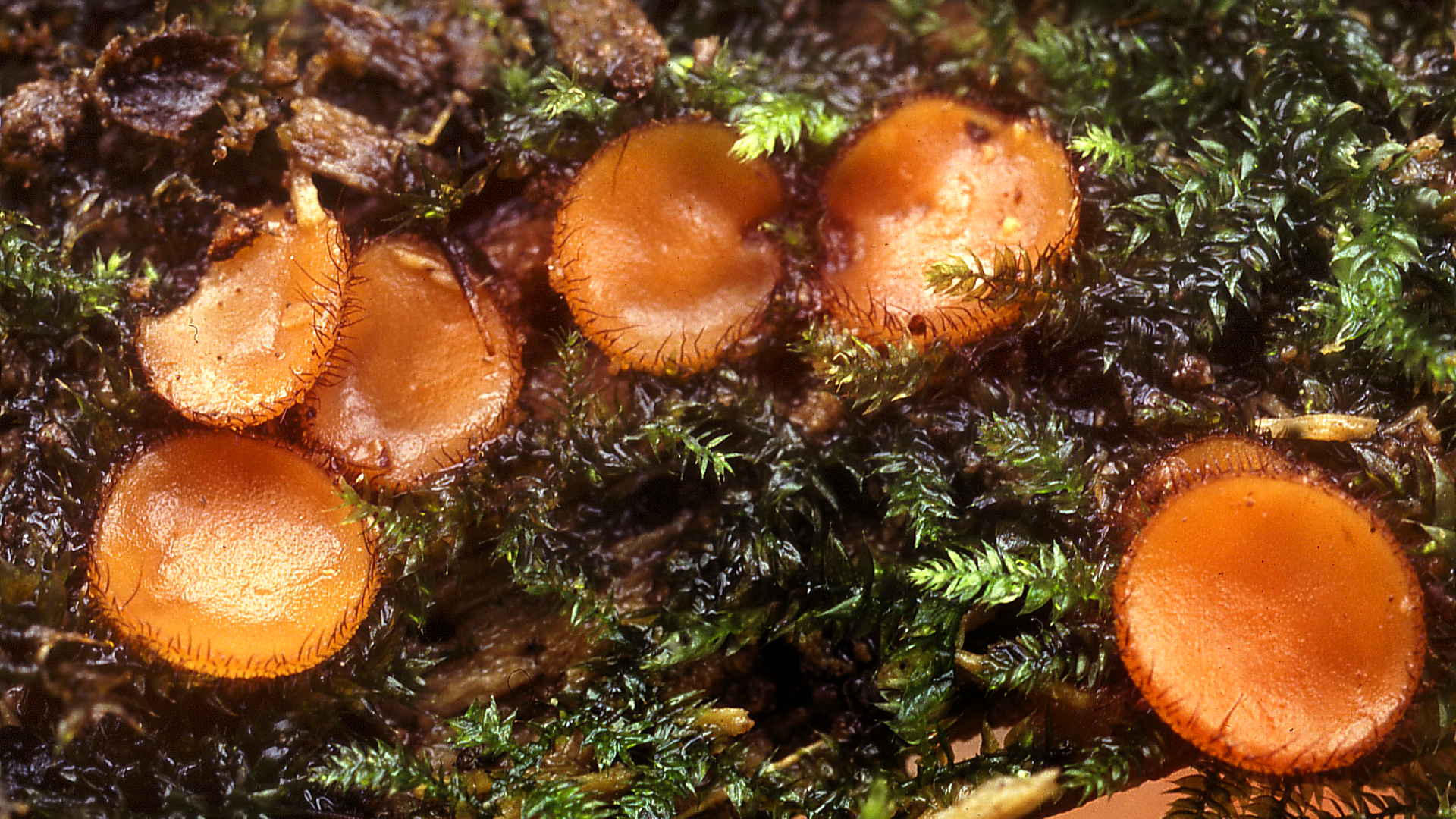
Name: Common Eyelash Scutellinia scutellata
#
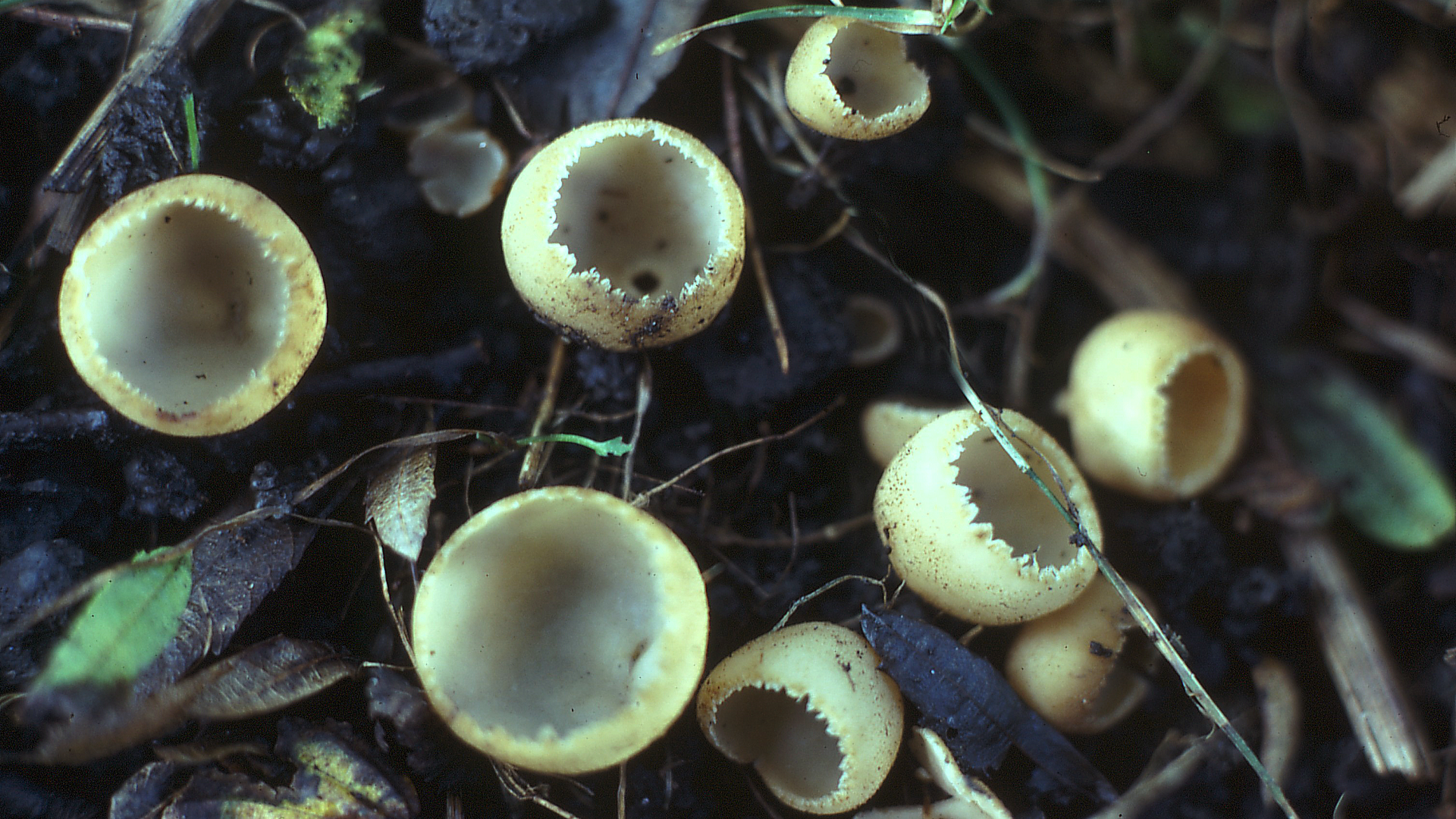
Name: Greater Toothed Cup Tazzeta catinus
Description: The tiny caps, 1.5 to 5cm across, are often gregarious. True identification is near impossible without microscopic examination due to similar species.
Habitat: Found on soil, rotten wood and woodchips. Associated with beech and hornbeam.
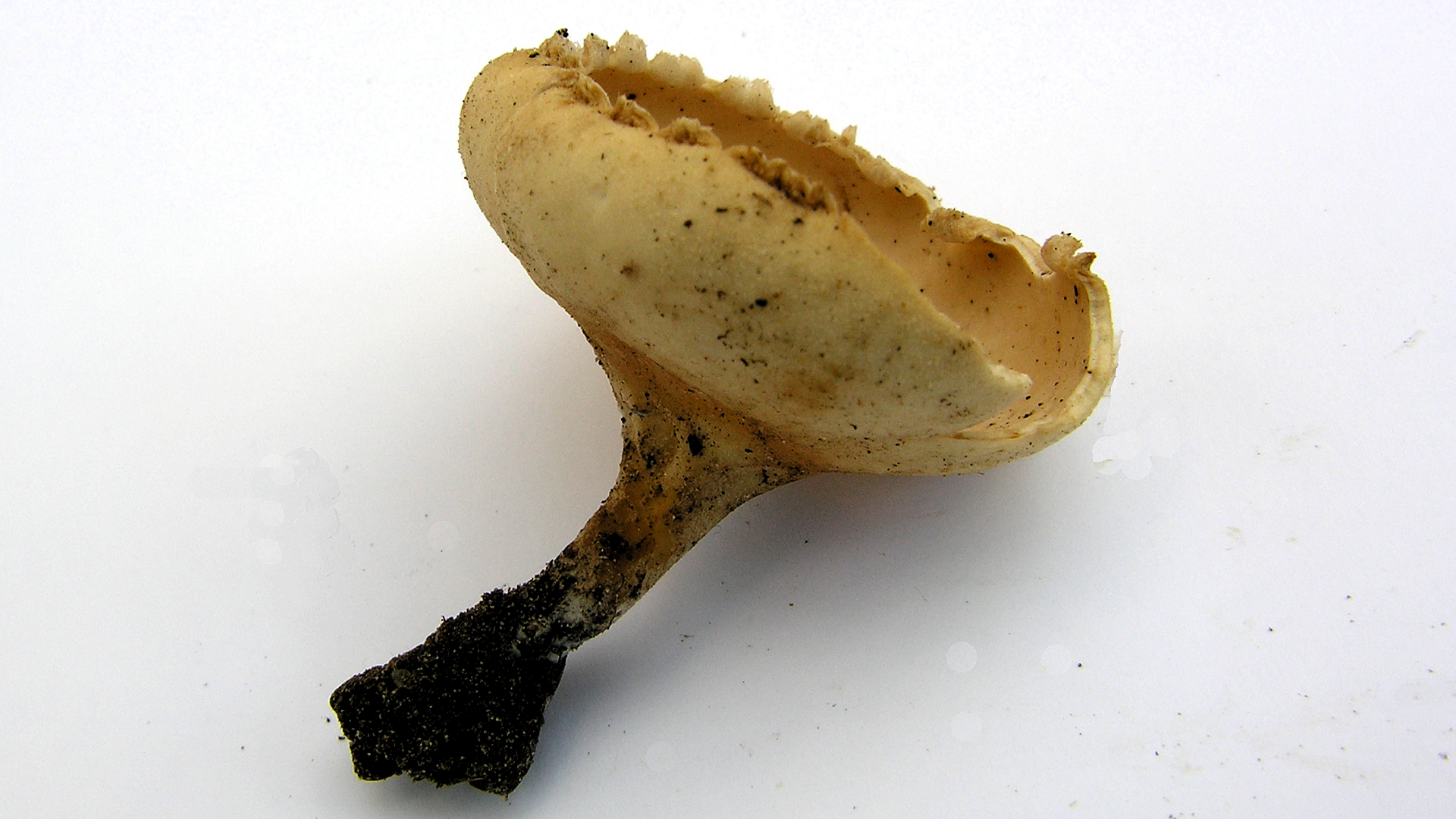
Name: Greater Toothed Cup Tazzeta catinus
#
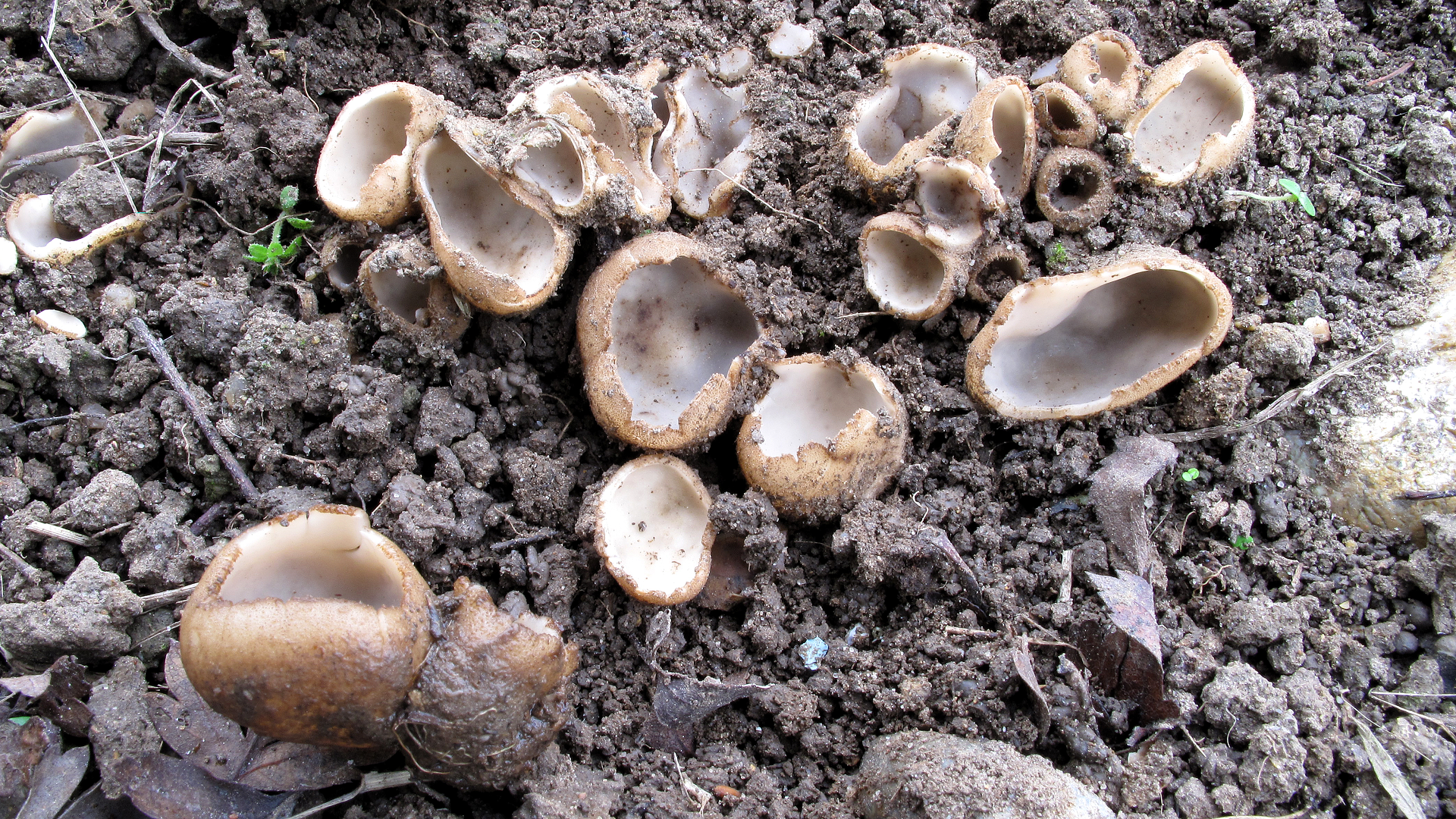
Name: Glazed Cup Humaria hemisphaerica
Description: Tiny cup fungus, 20 - 30mm across. The brown outer surface is covered entirely in stiff, brown hairs.
Habitat: Has a preference for soil and rotten hardwood.
#
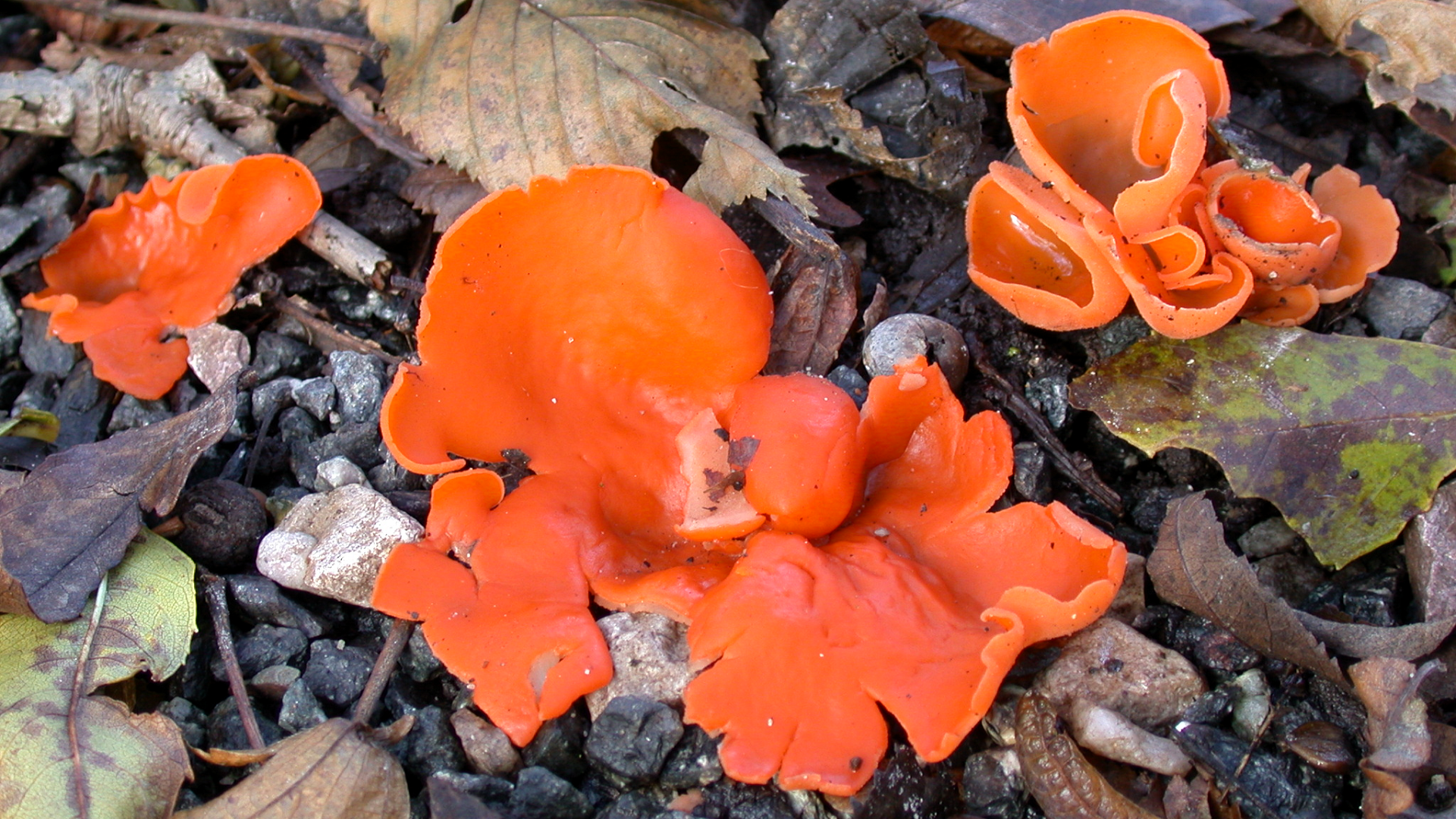
Name: Orange Peel Fungus Aleuria aurantia
Description: The bright orange cups often resemble orange peel. Its cups, 1 - 4cm across, are often misshapen due to being crowded together with other fruiting bodies.
Habitat: Found on disturbed soil near woodland paths with a preference for exposed locations. As well as Hainault Forest, this species has also be seen in All Saints Graveyard at Chigwell Row.
#
HELOTIACEAE
Green Elfin Cup
Chlorociboria aeruginascens
Found on rotting wood of broadleaf trees.
LEOTIACEAE
Purple Jellydisc
Ascocoryne sarcoides
Found on dead beech wood during autumn. The fruiting bodies normally appear in patches. They are often shaped irregularly and not disc-like at all. With maturity the disc shapes can become more obvious.
HELOTIACEAE
Oak Pin
Cudoniella acicularis
Found on oak branches.
HELOTIACEAE
Beech Jelly Disc
Neobulgaria pura
Found on fallen trunks and branches of European Beech Fagus sylvatica.
HYPOCREACEAE
Coral Spot
Nectria cinnabarina
Coral-coloured blobs grow in clusters on decaying deciduous wood. The individual blobs are 1-4mm across and very hard. Associated with beech woodland.
MORCHELLACEAE
Semi-free Morel
Morchella semilibera
Found in leaf litter along path edges.
PEZIZACEAE
Pedicel Cup
Peziza micropus
Grows on very rotten dead hardwood, especially beech, often inside hollow stumps.
PYROMEMATACEAE
Tan Ear
Otidea alutacea
Buff-coloured fungus, also known as Brown Clustered Ear Cup.
PYROMEMATACEAE
Toad's Ear
Otidea bufonia
Saprobic cup fungus sometimes found near woodland paths.
PYROMEMATACEAE
Hare's Ear
Otidea bufonia
Found in broad-leaved woodland soil often fruiting in small clustered groups.
SARCOSCYPHACEAE
Scarlet Elfcup
Sarcoscypha austriaca
Usually appears during winter months on dead twigs. Has a preference for damp shaded locations where it is usually found partially buried in moss.
RUTSTROEMIACEAE
Brown Cup
Rutstroemia firma
Found on Oak Quercus twigs.
SCLEROTINIACEAE
Acorn Rot
Ciboria batschiana
Causes black rot on old acorns usually in wet and cold weather.
XYLARIACEAE
King Alfred's Cakes
Daldinia concentrica
Pinkish-brown fungus that blackens with age. Concentric growth rings are revealed when cut in half, hence 'concentrica' in the Latin name. Usually on dead or dying ash tree wood. Also known as 'Crampball fungus'.
XYLARIACEAE
Beech Woodwart
Hypoxylon fragiforme
Appears as small warty growths on beech wood. The brick-red rounded fruiting bodies are up to a centimetre across. With age the warts blacken and harden.
XYLARIACEAE
Birch Woodwart
Hypoxylon multiforme
Found on dead Birch Betula wood on the ground.
XYLARIACEAE
Candlesnuff
Xylaria hypoxylon
Common wood-rotting fungus seen throughout the year. It has stick-like or forked fruiting bodies with black bases and white powdery tips. Height 10-60mm.
XYLARIACEAE
Dead Moll's Fingers
Xylaria longipes
Found in damp habitats feeding on dead or dying wood, usually beech or sycamore. Its club-shaped fruiting bodies are 2-8 cm in height, and up to 2 cm thick. The fingers often appear in tufts similar to fingers of a dead hand.
© hainaultforest.net. All rights reserved.


